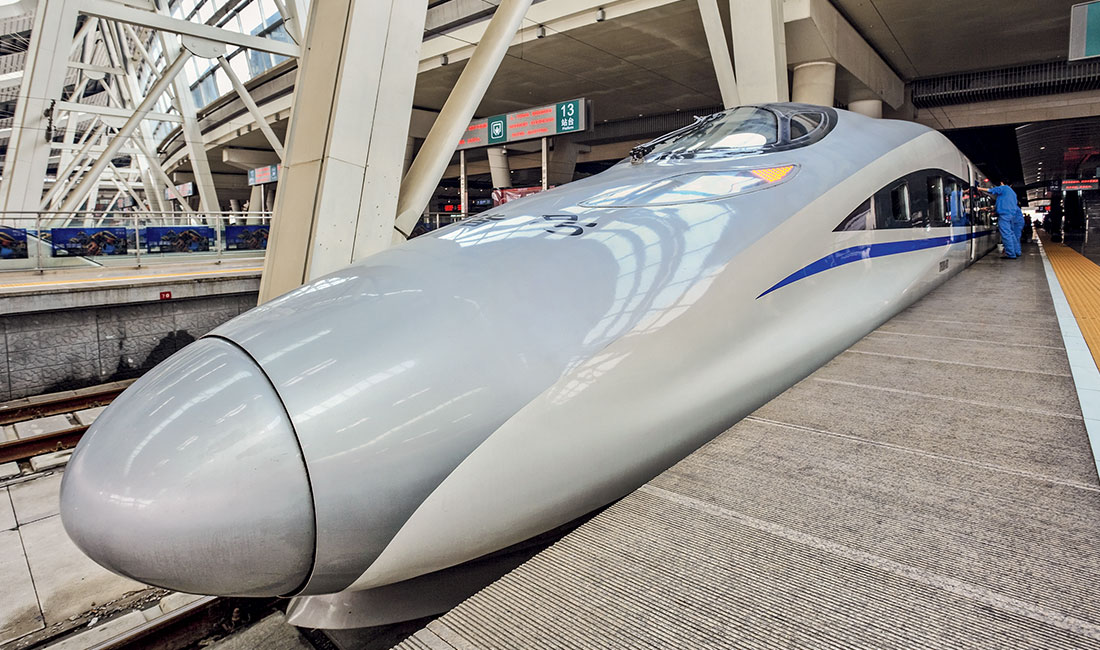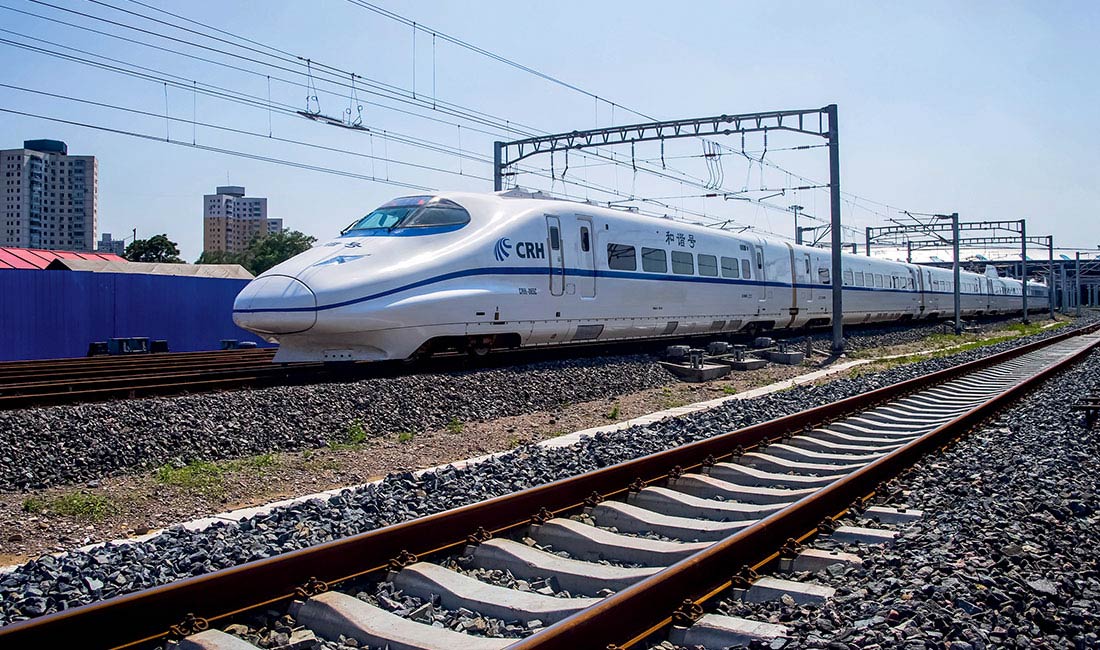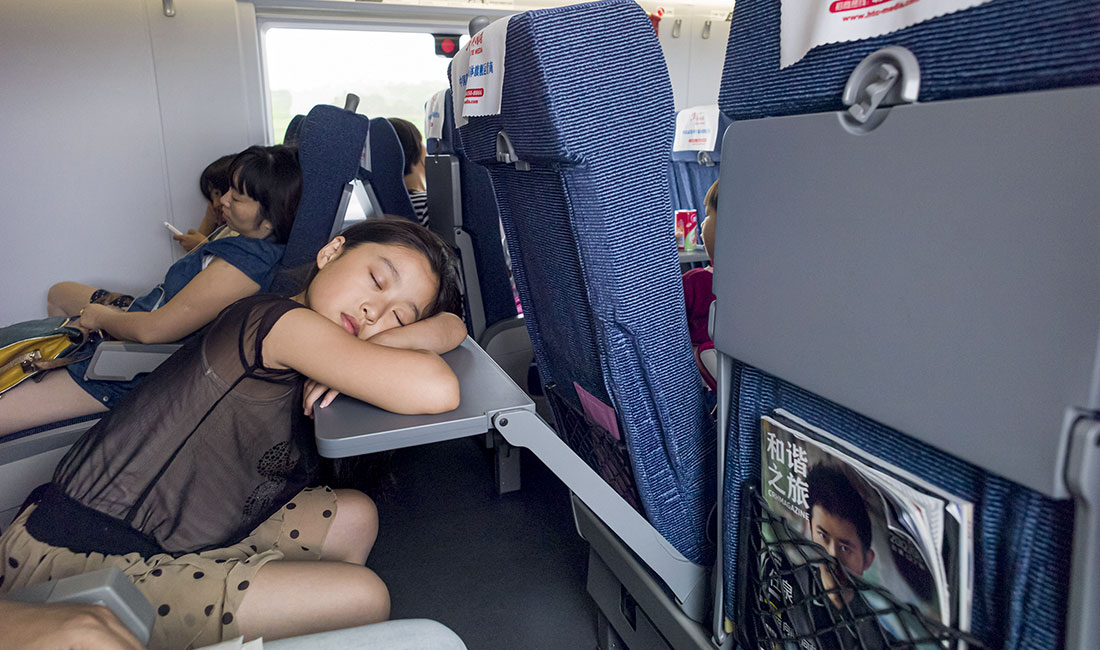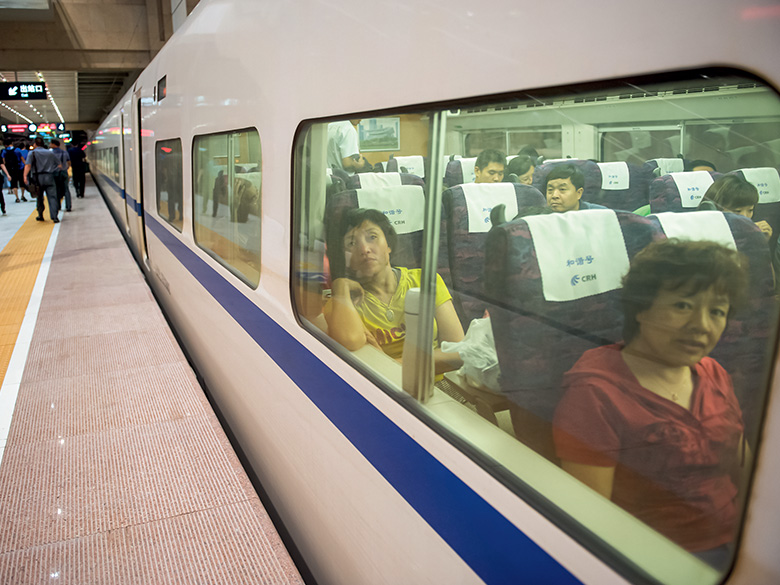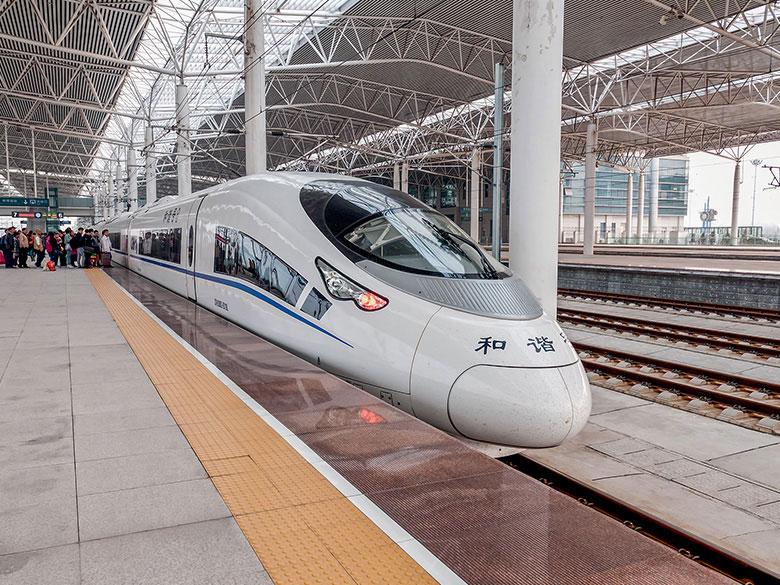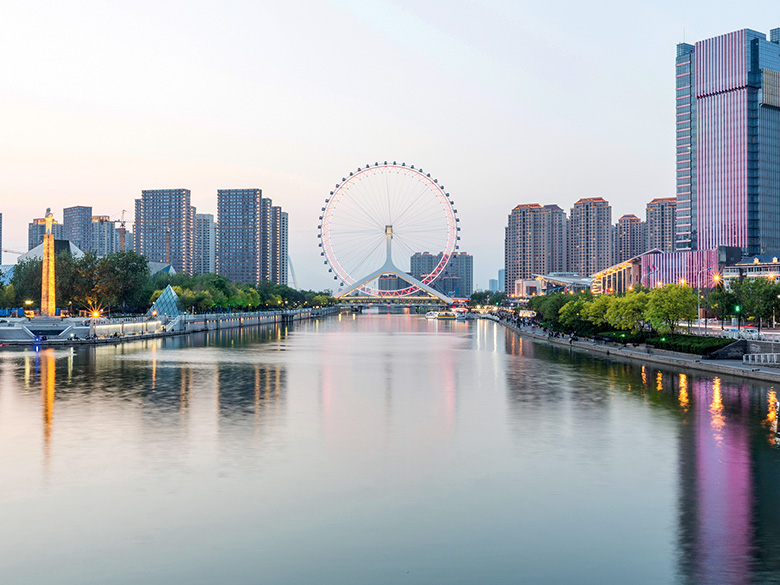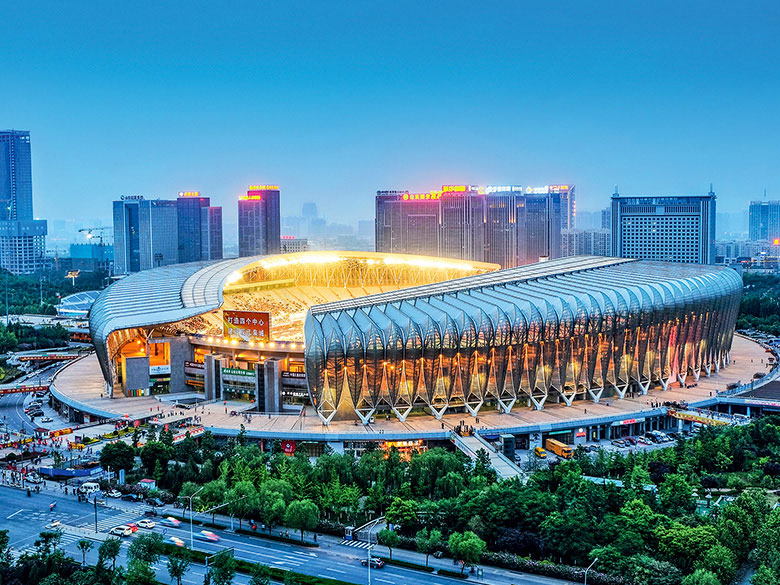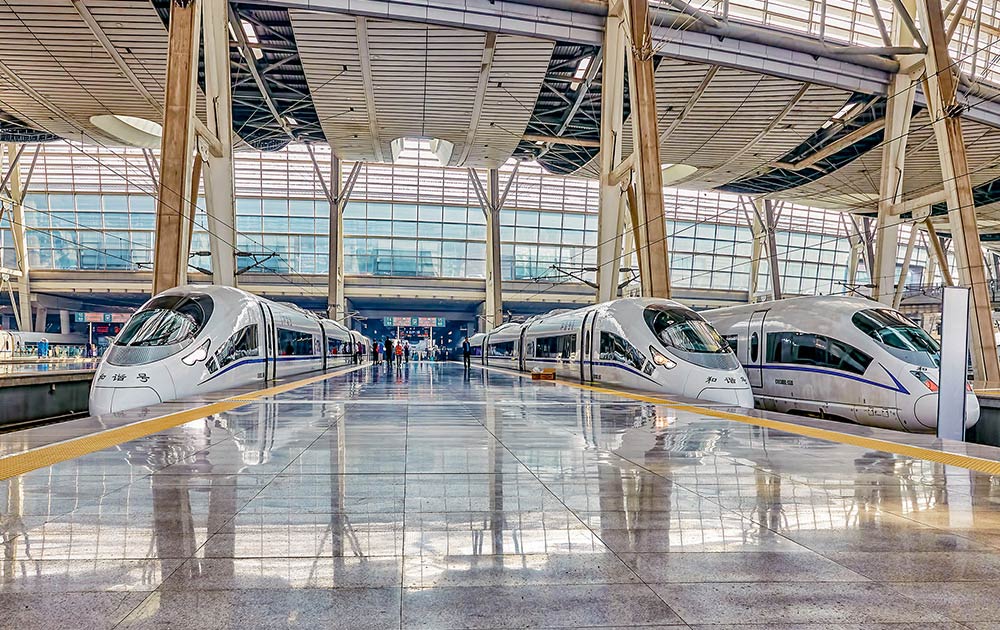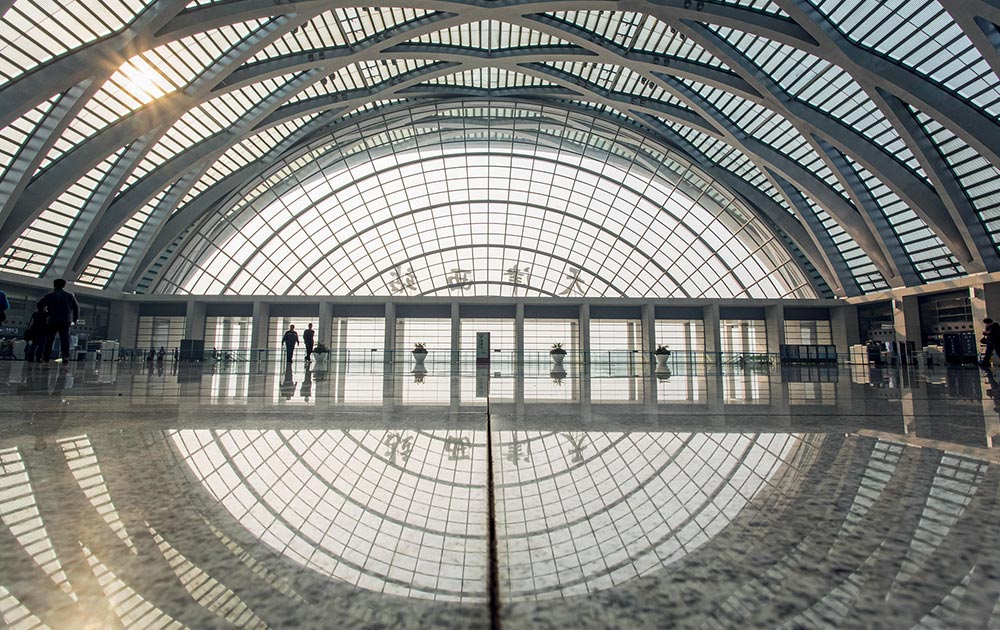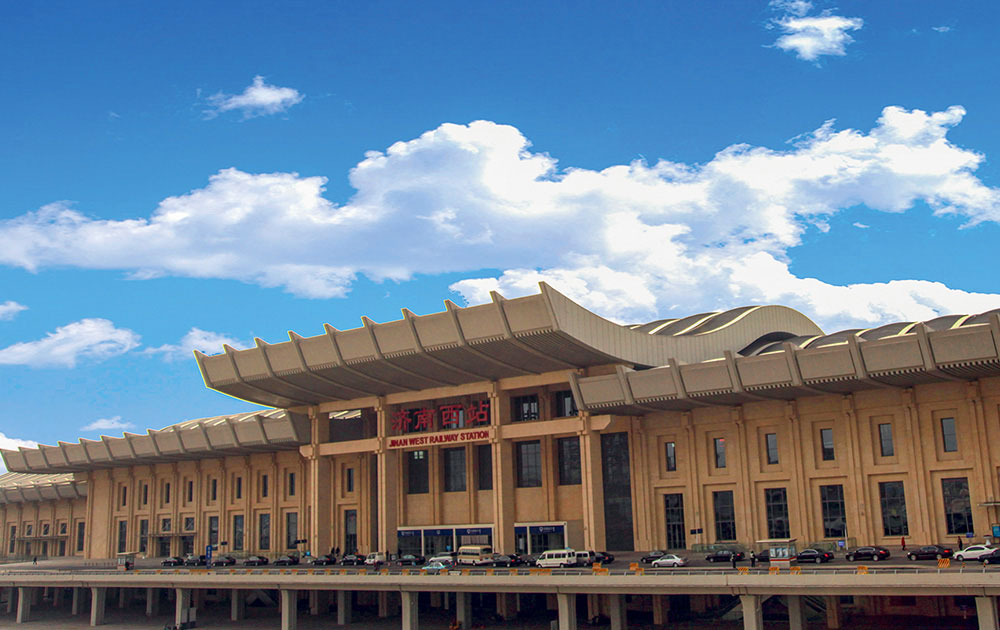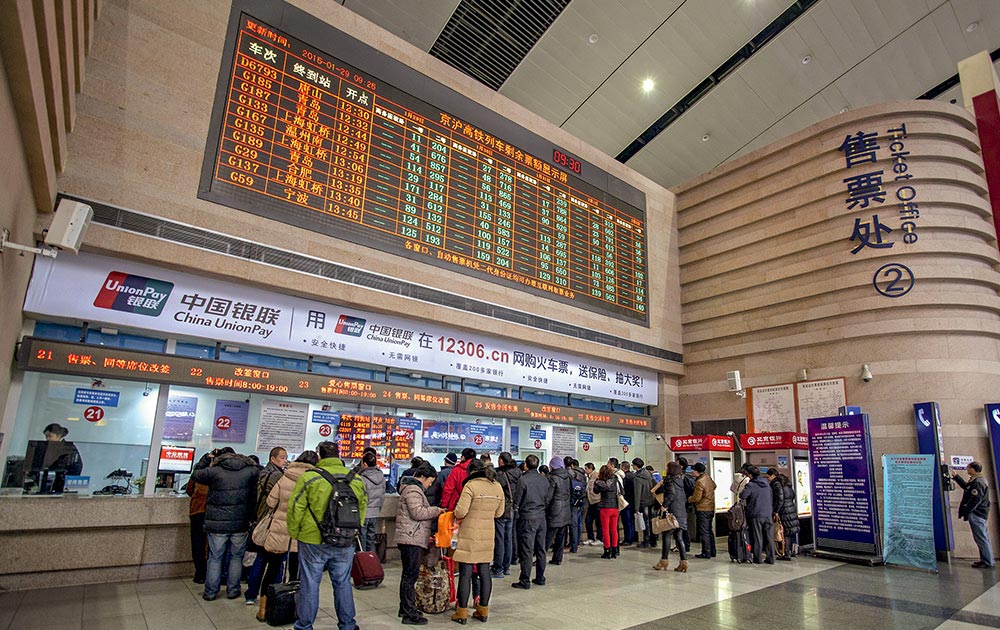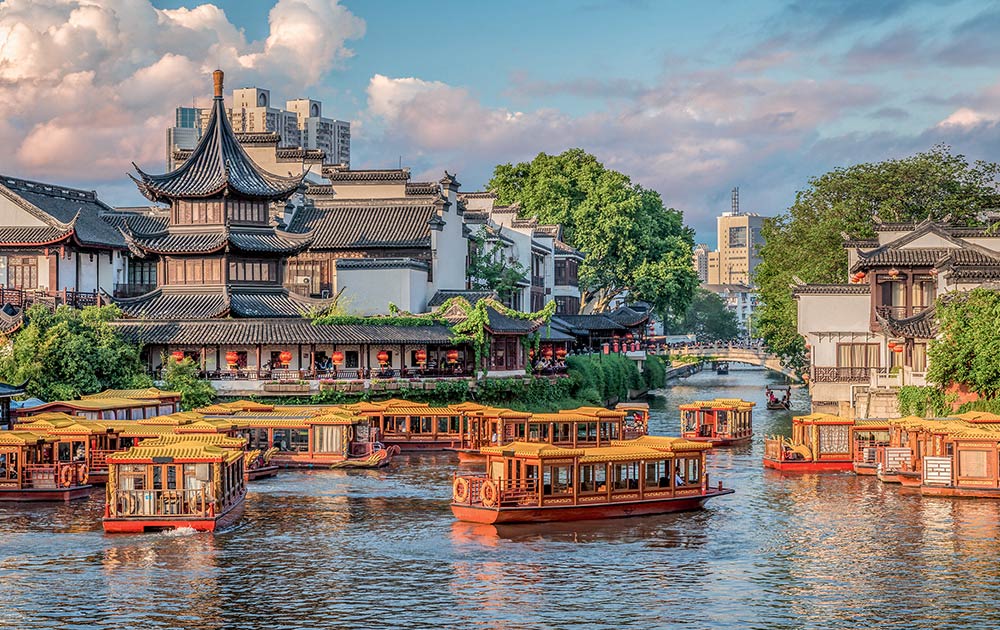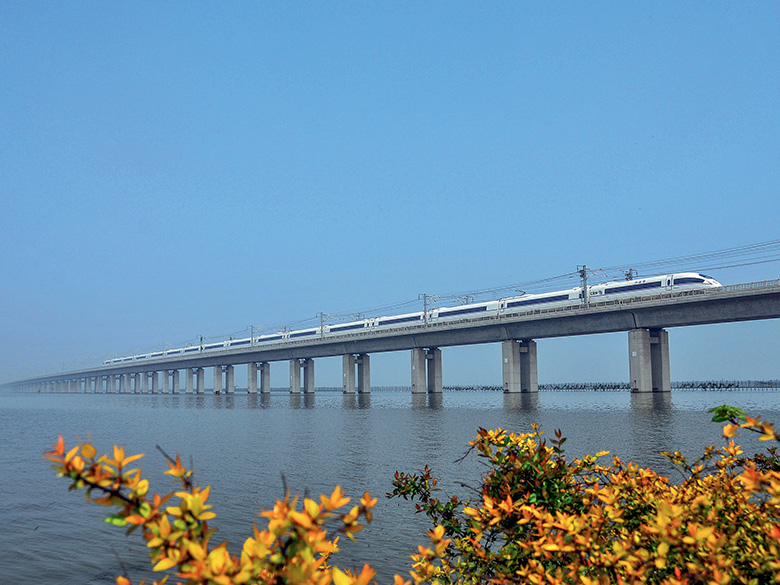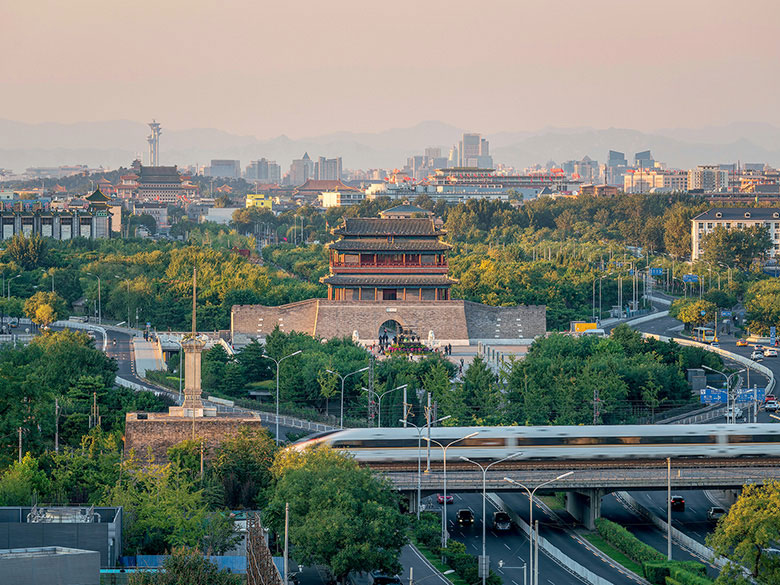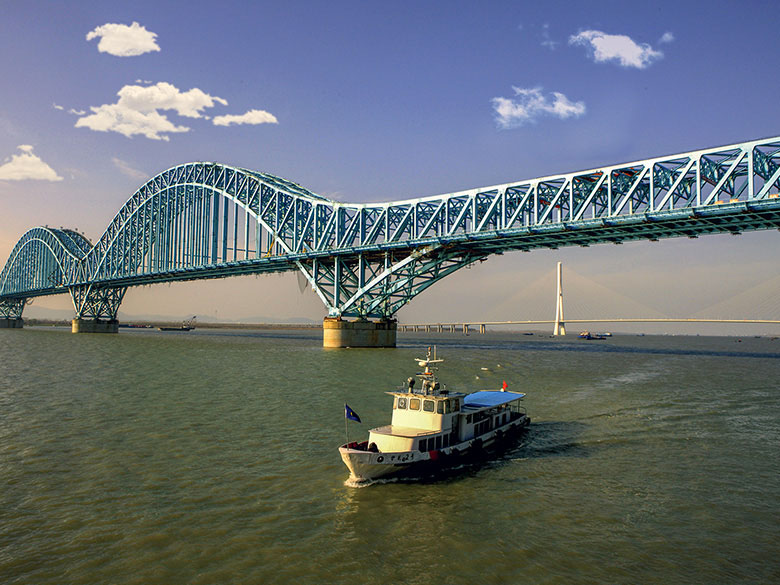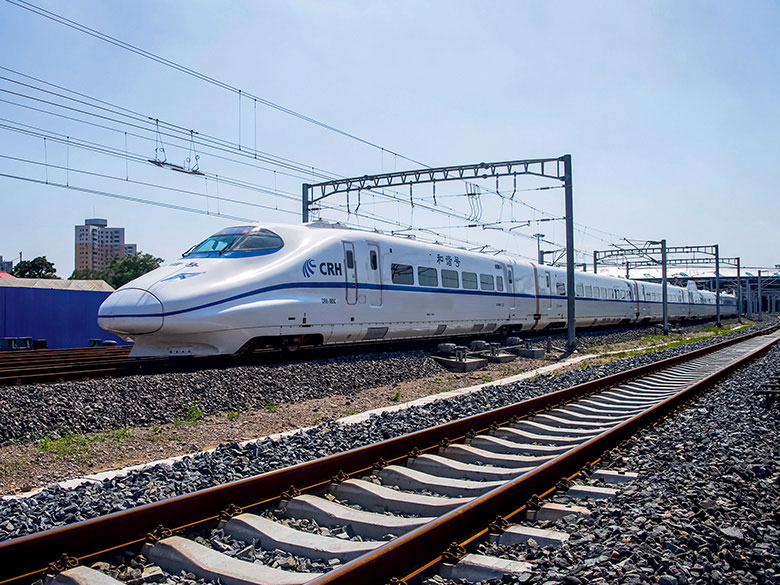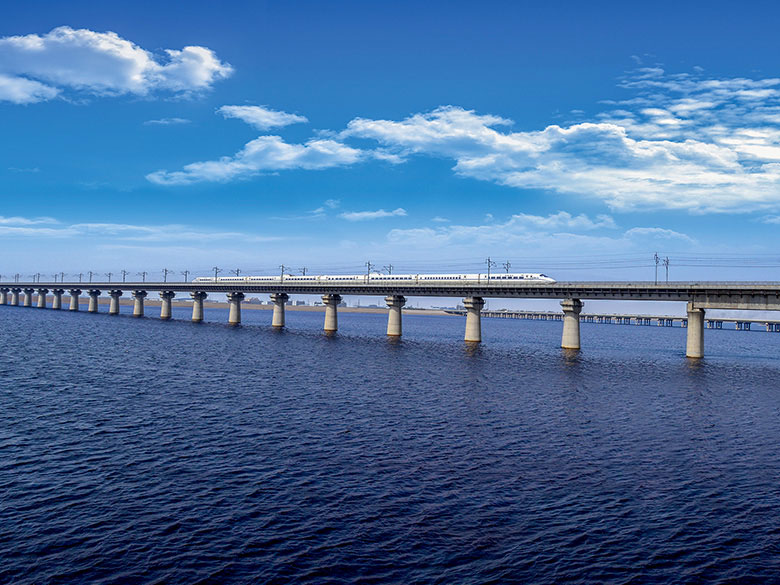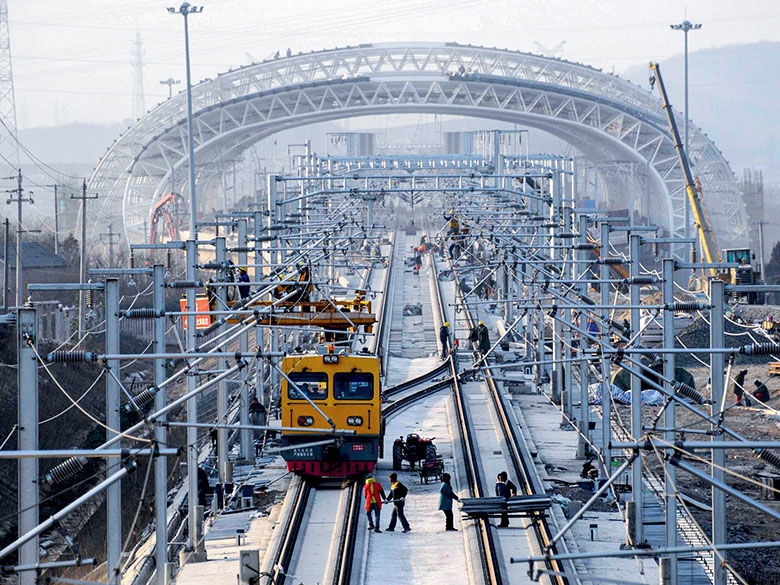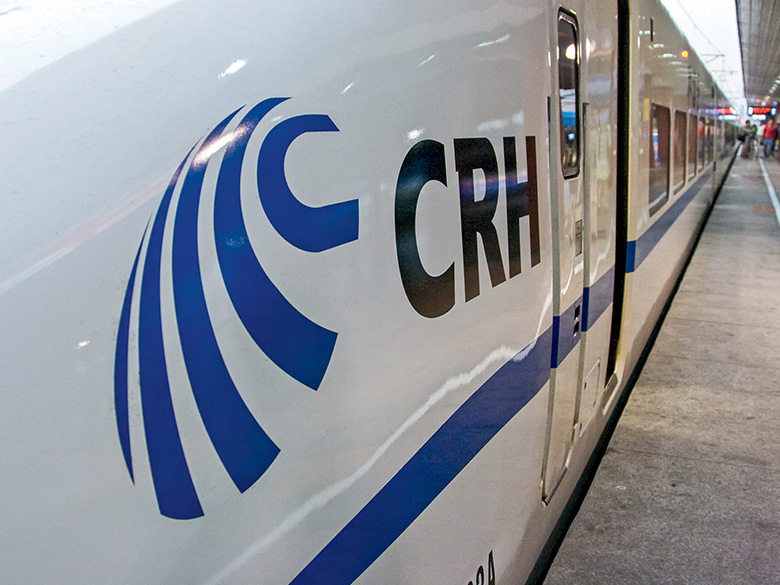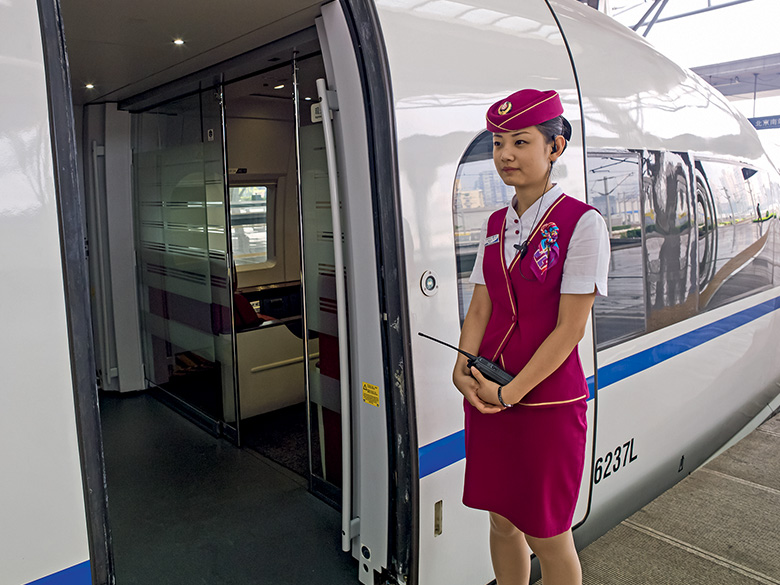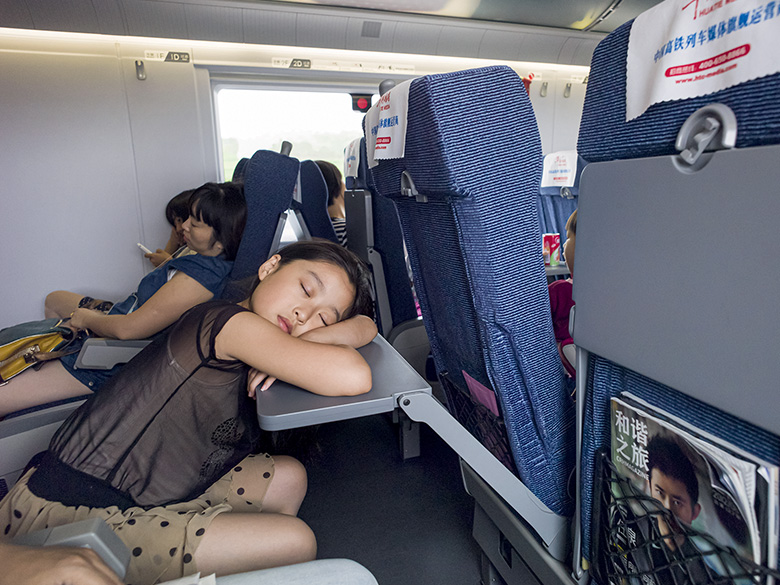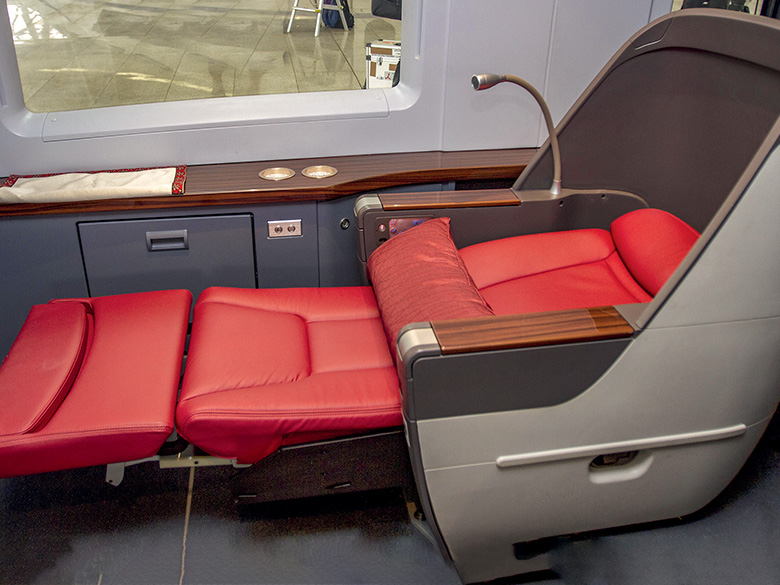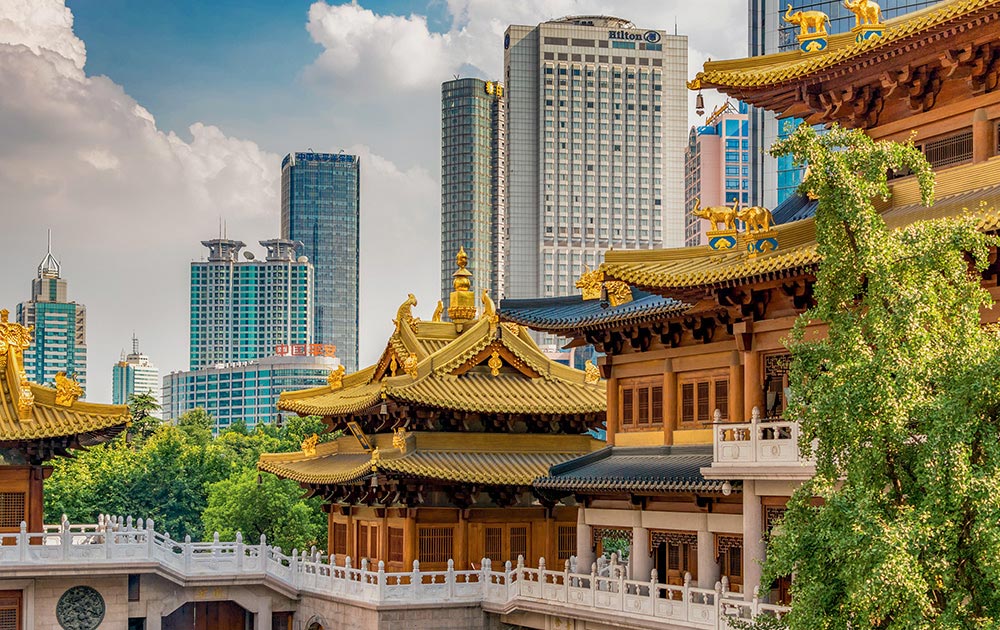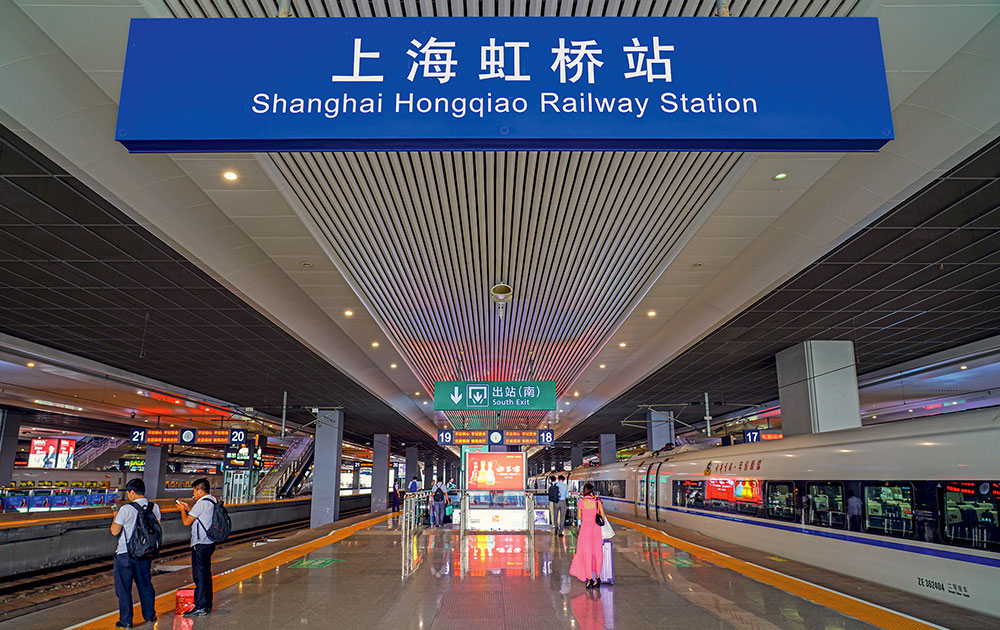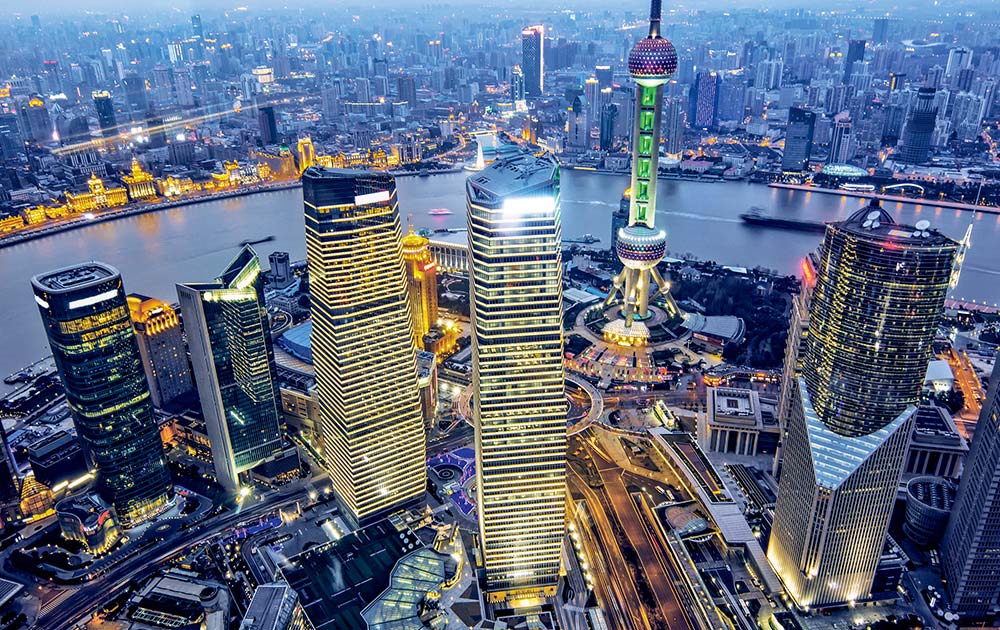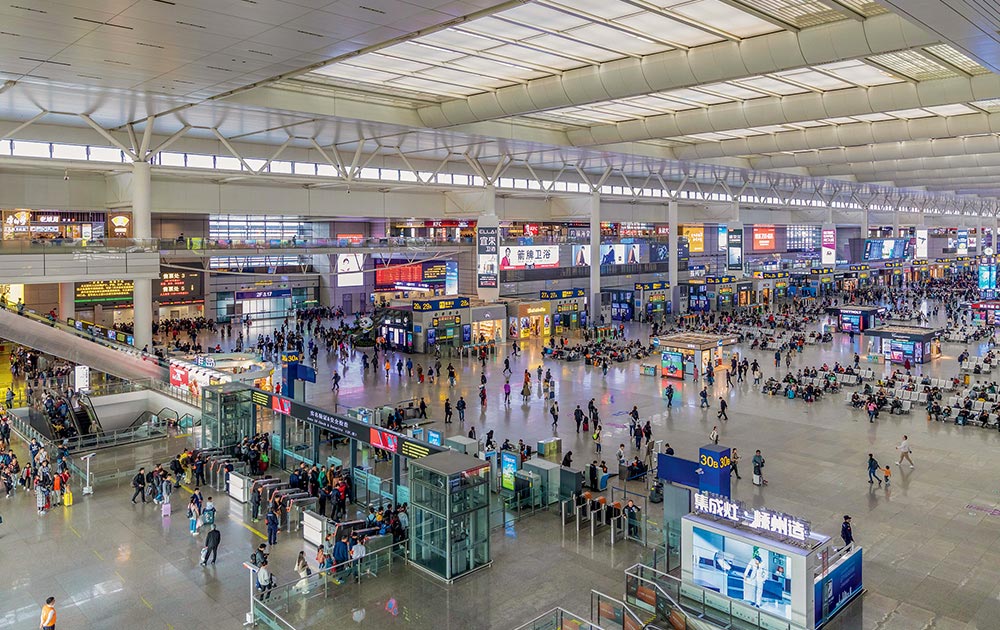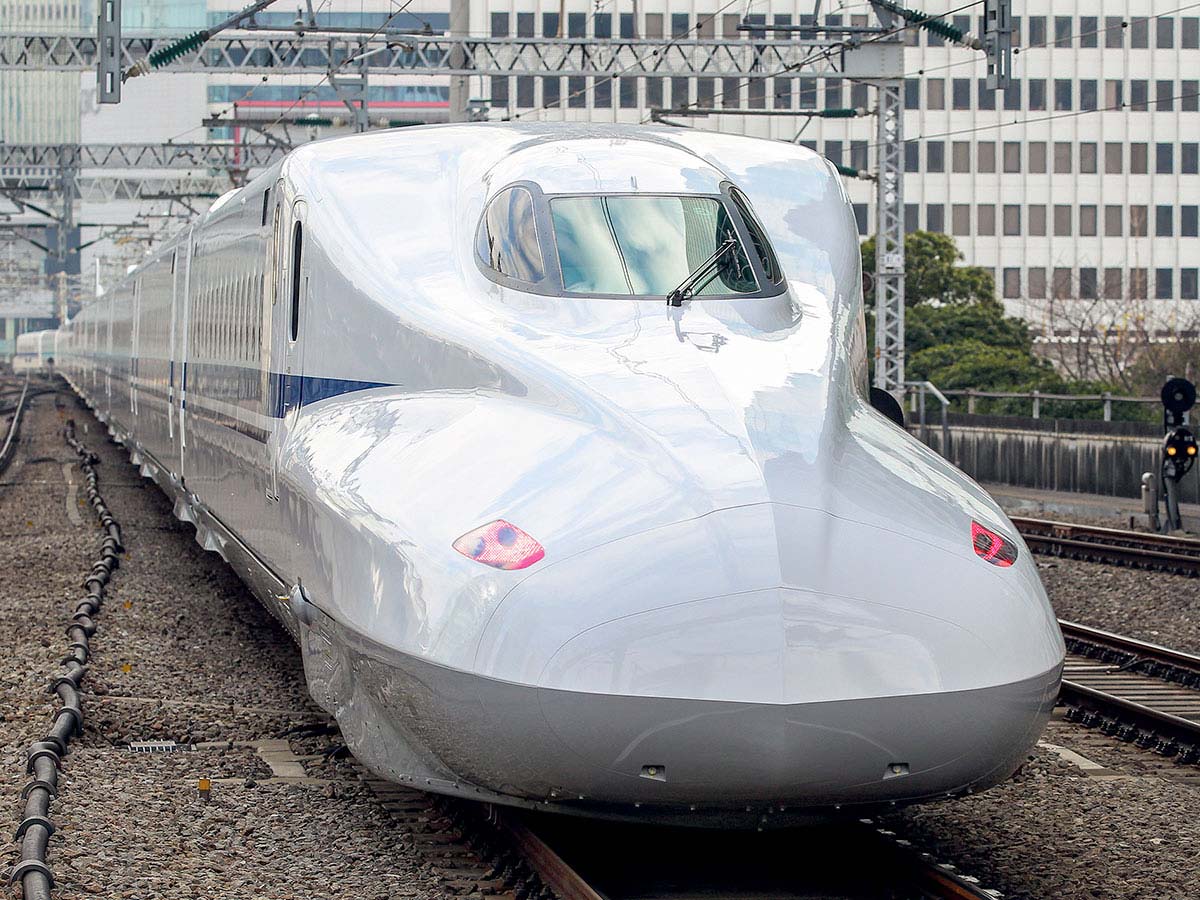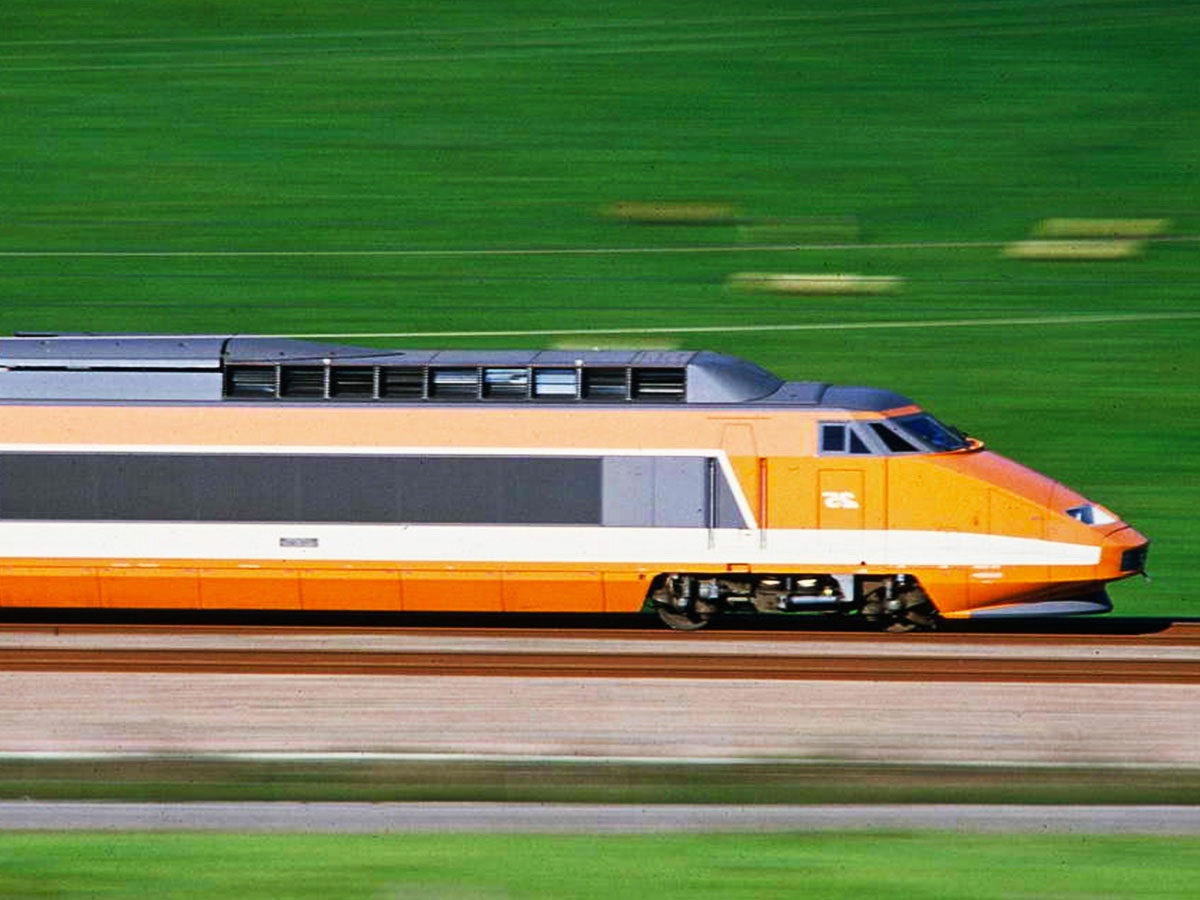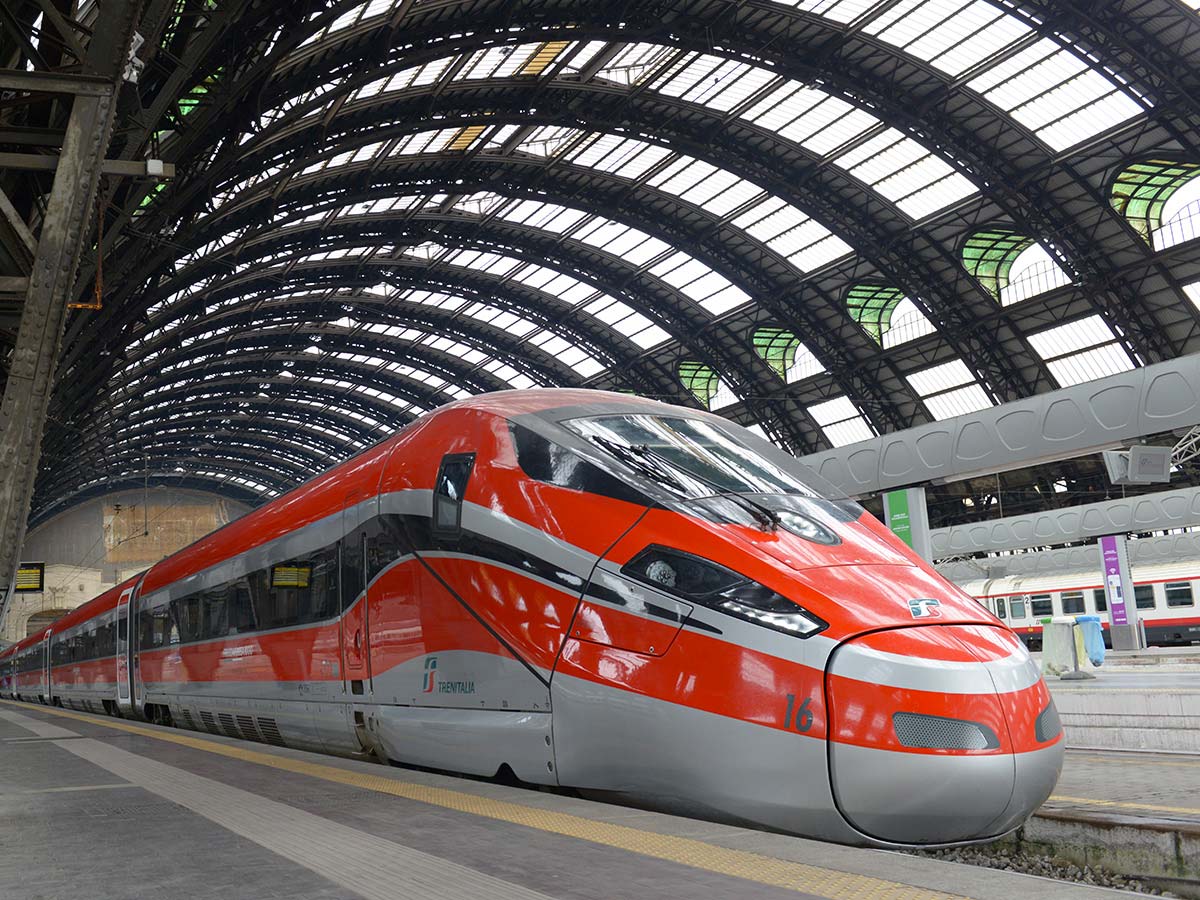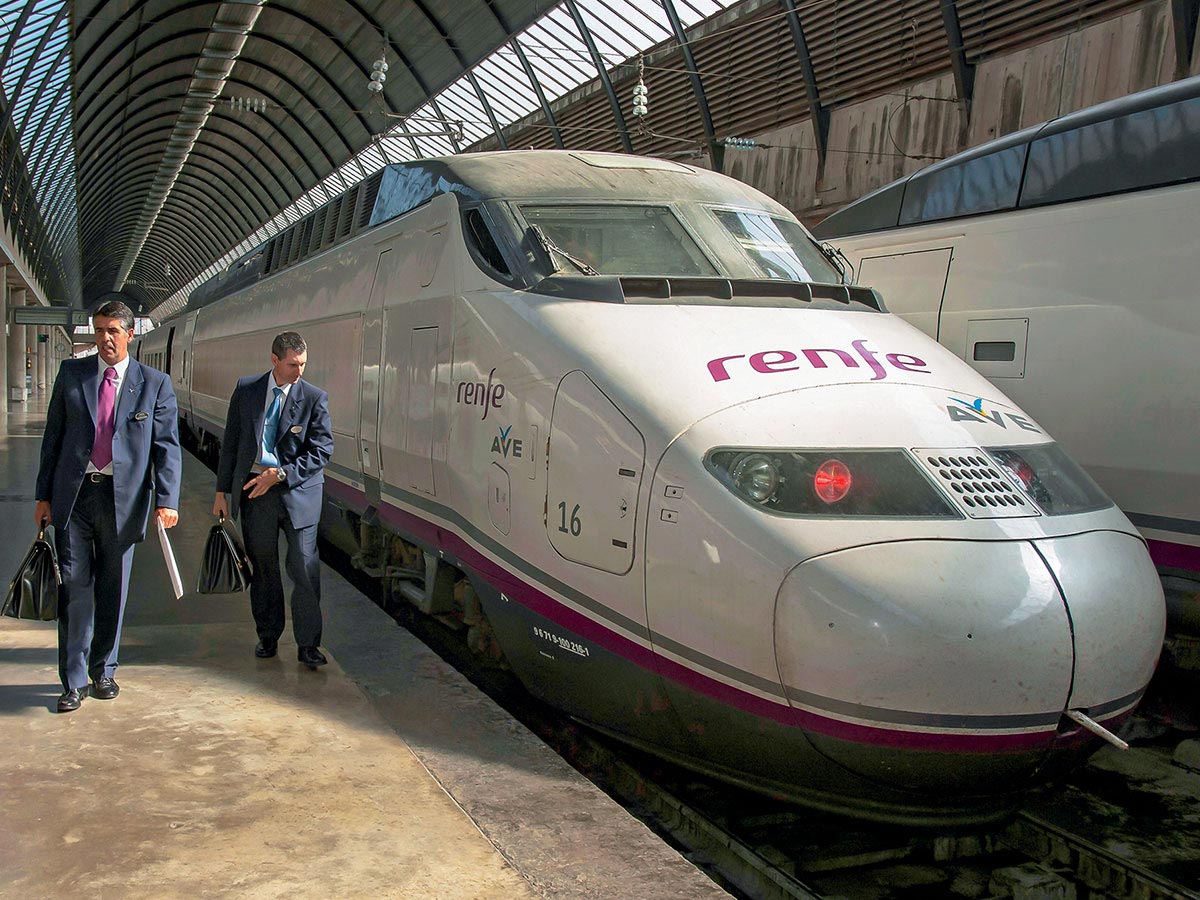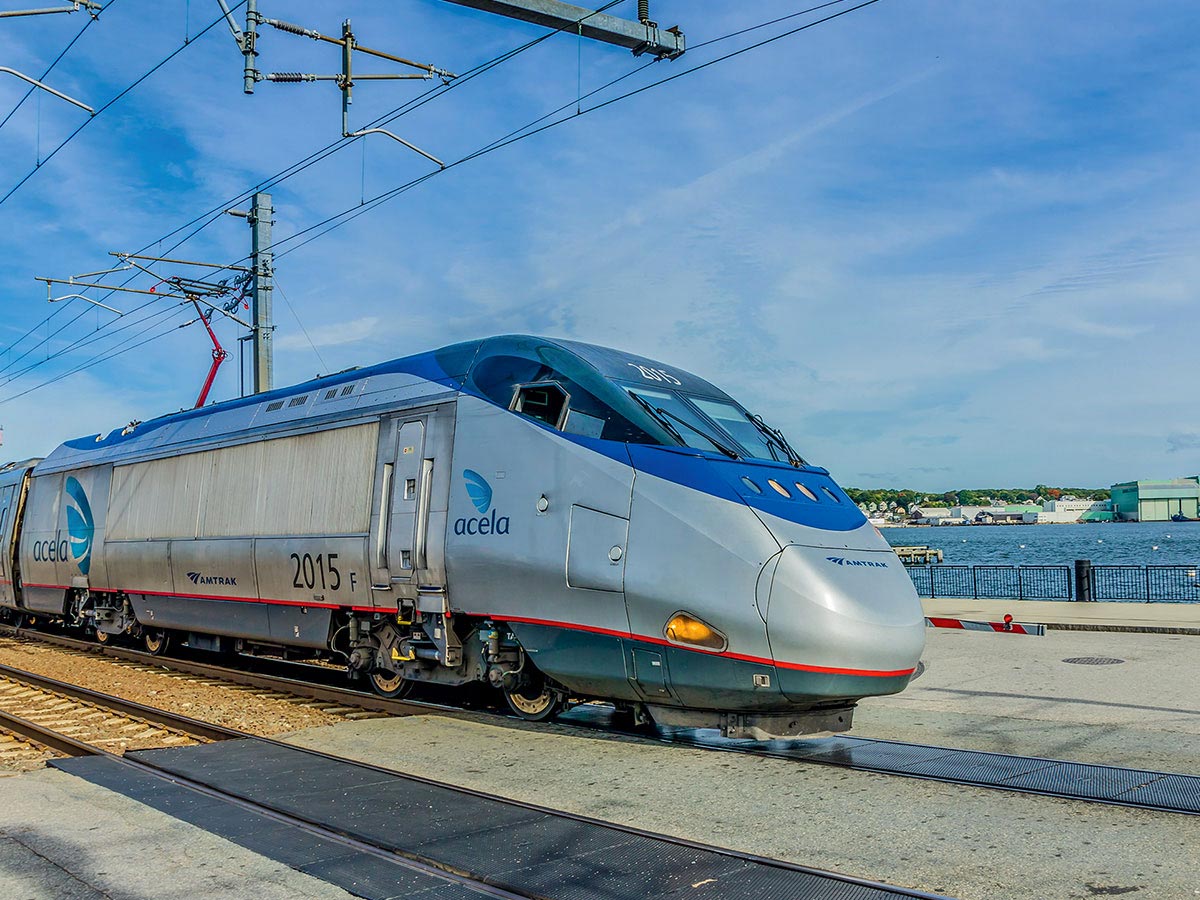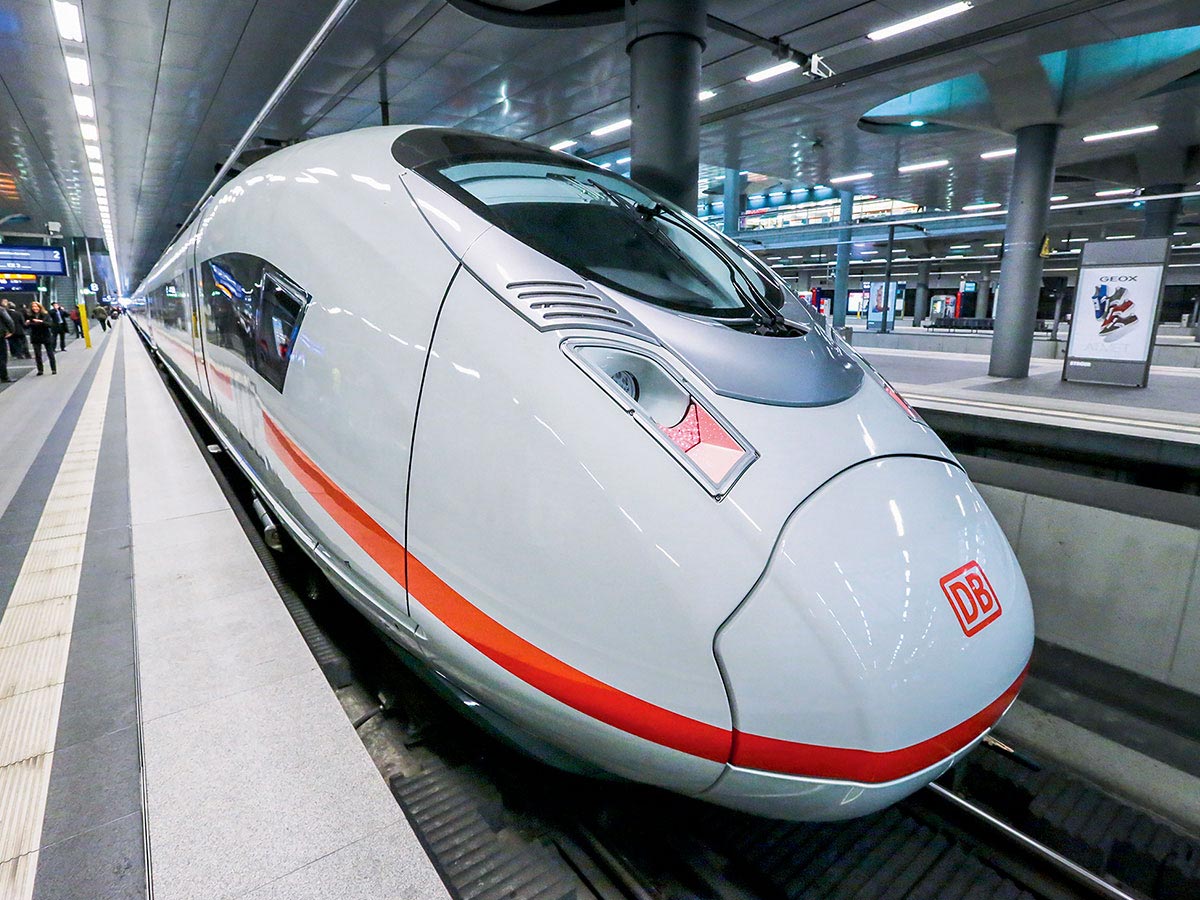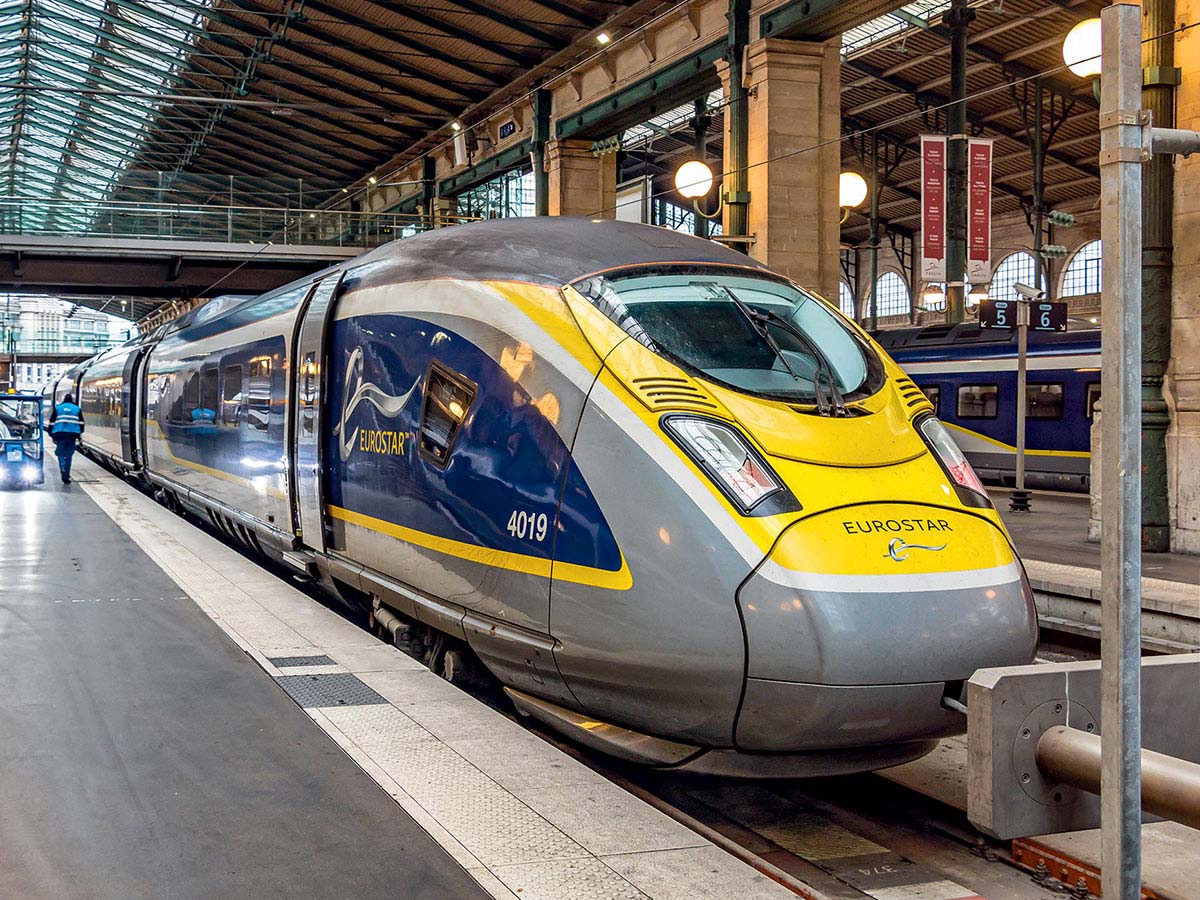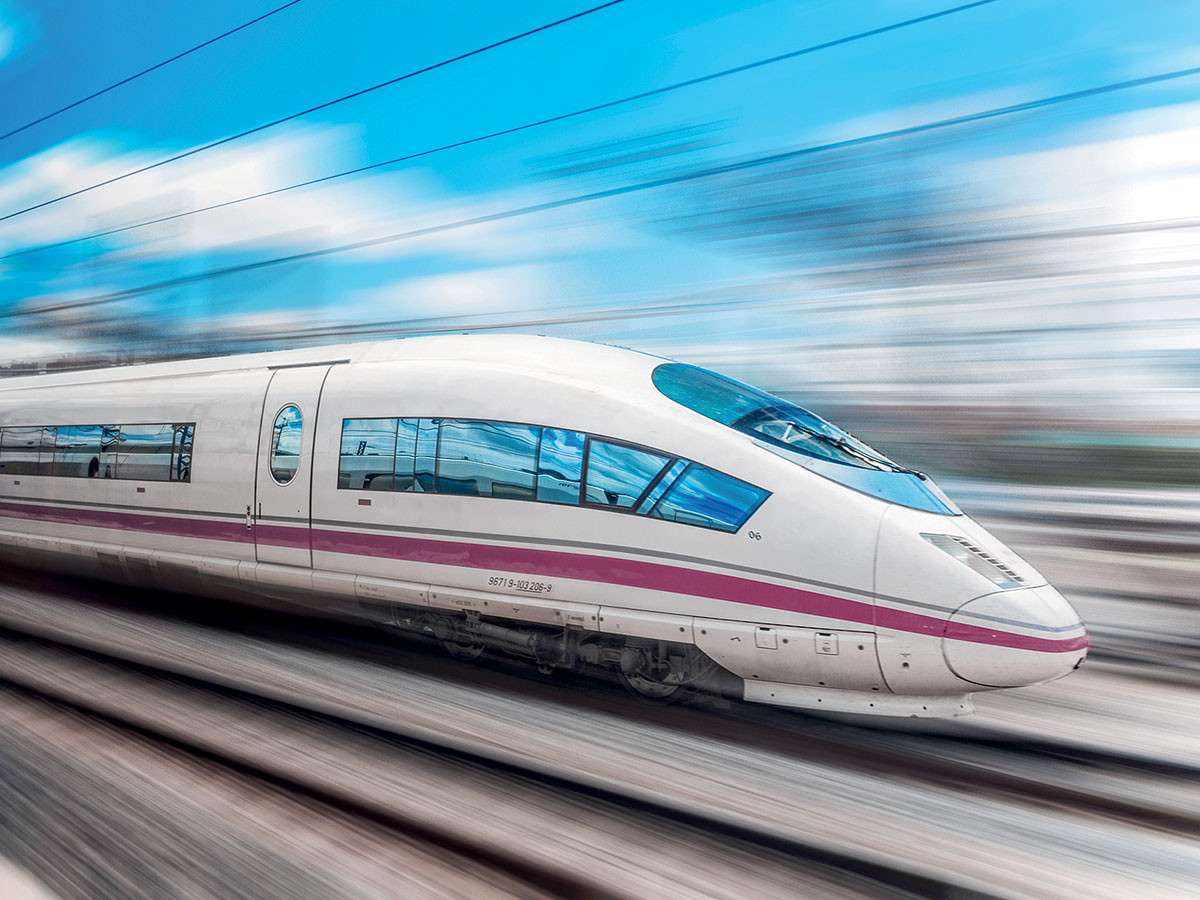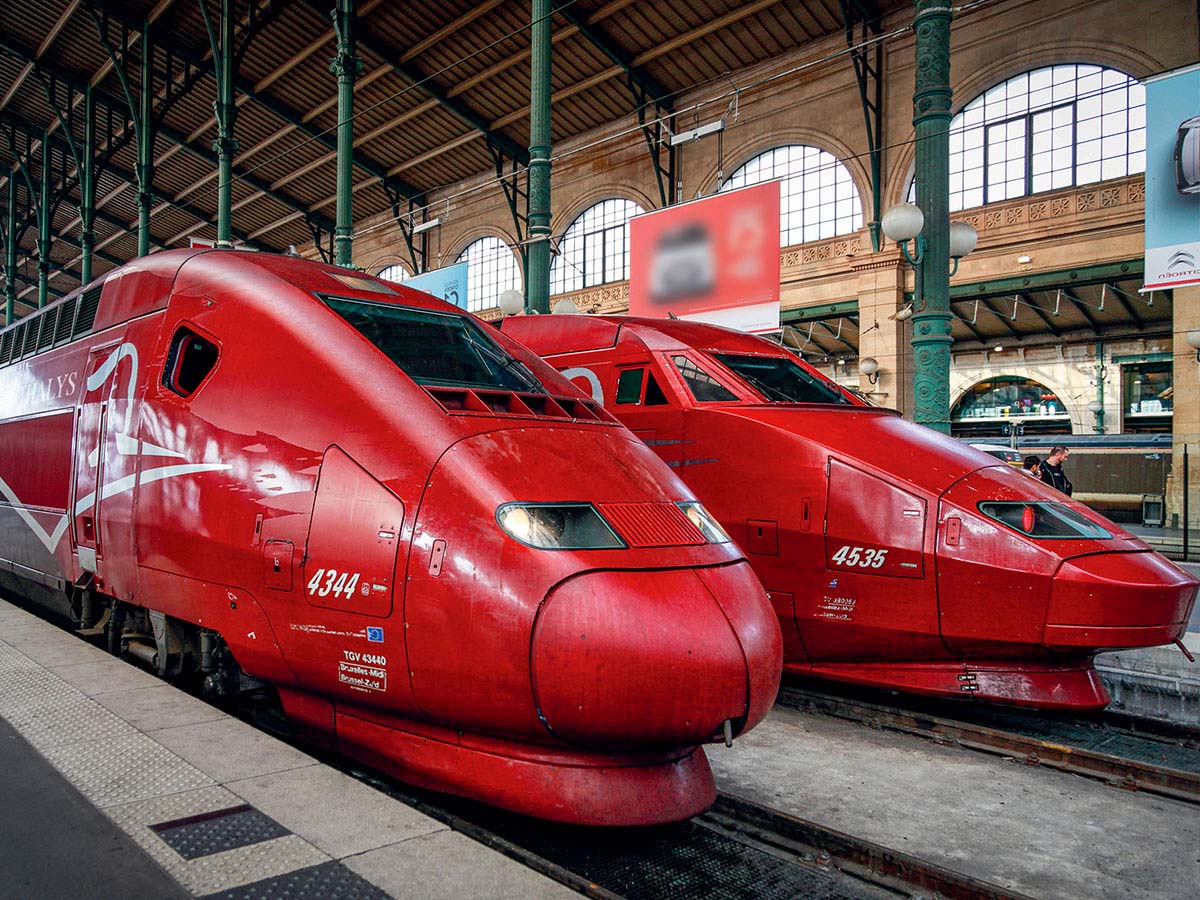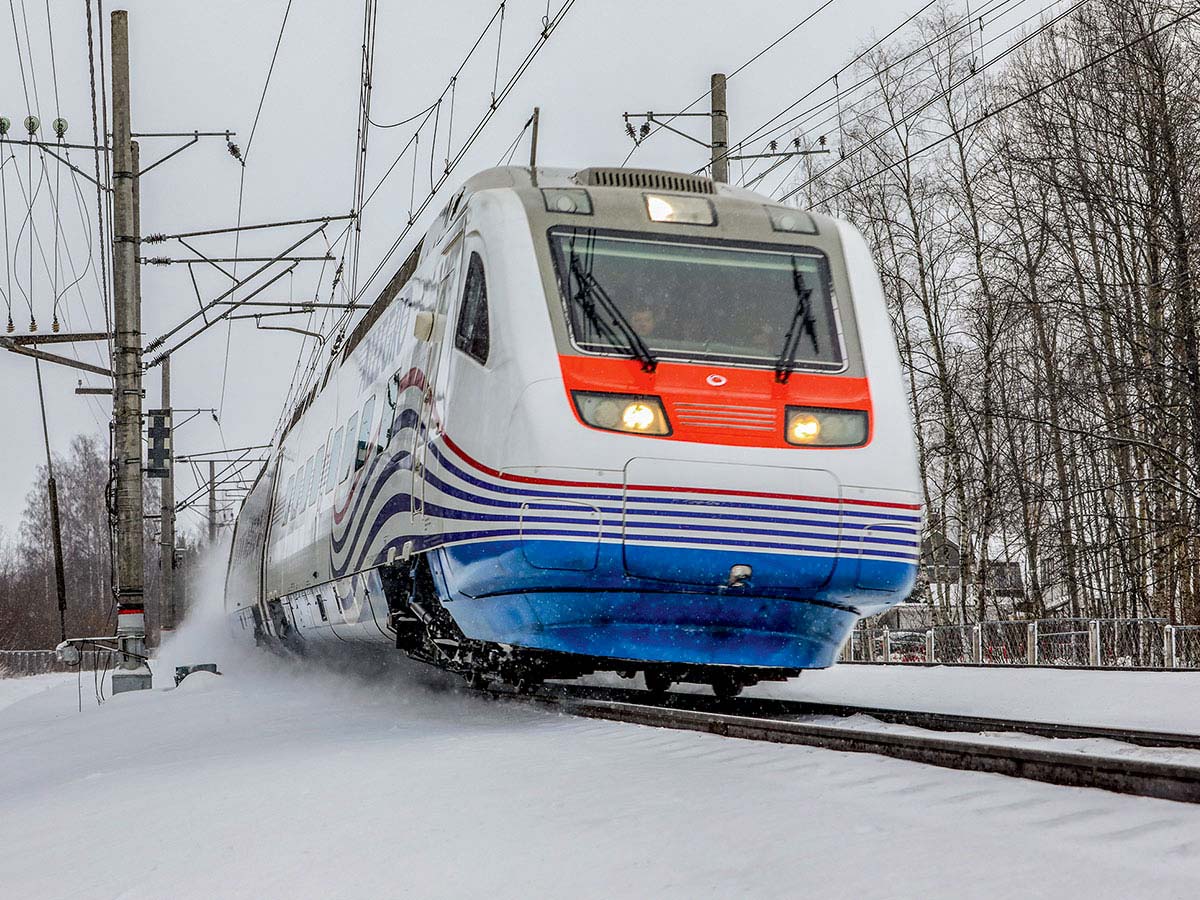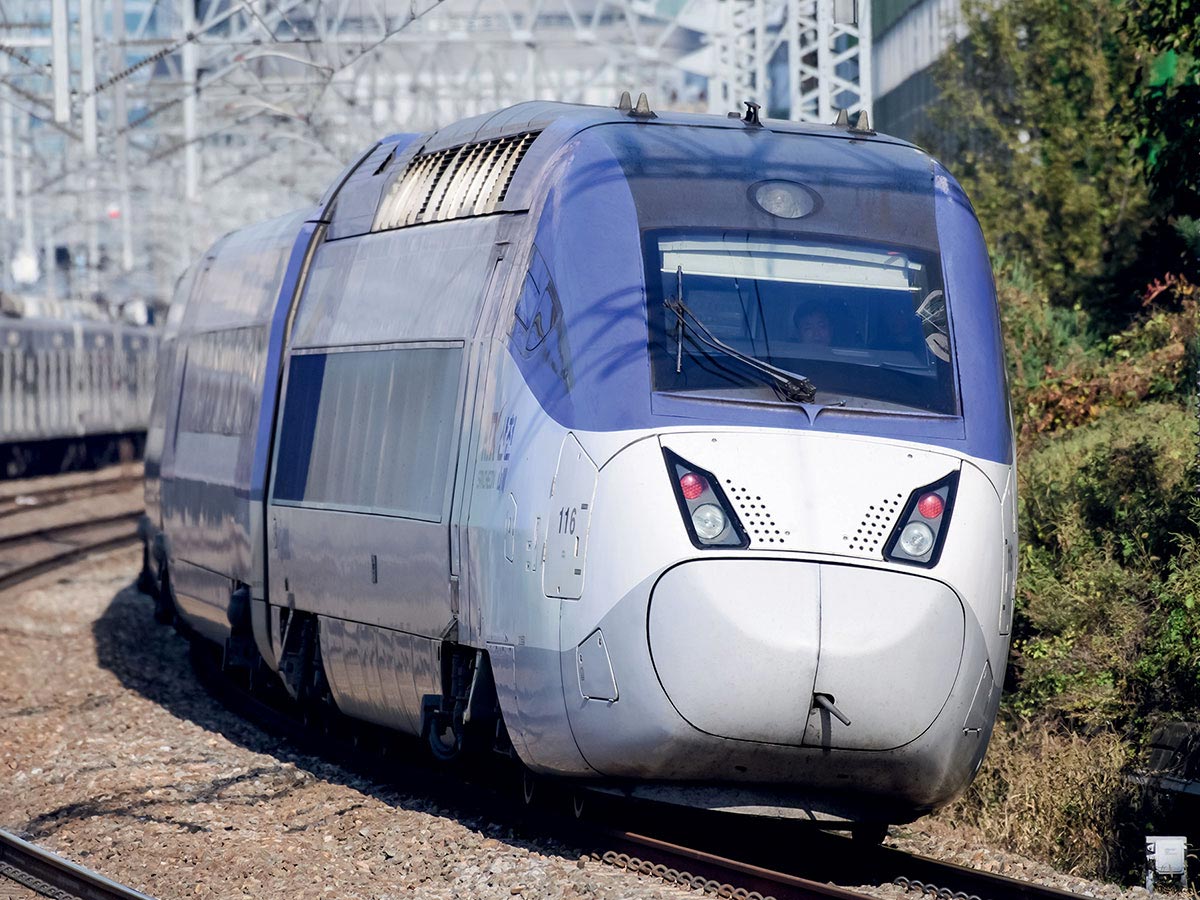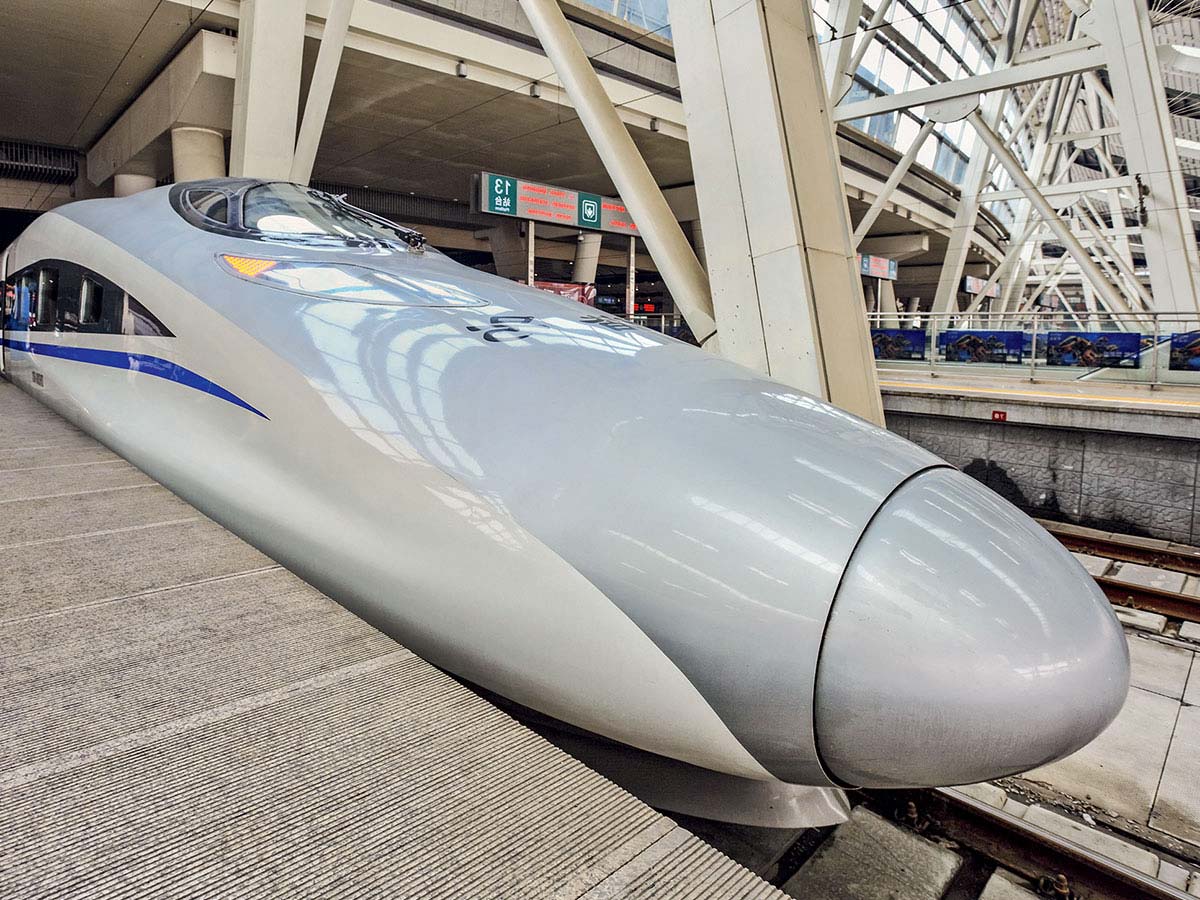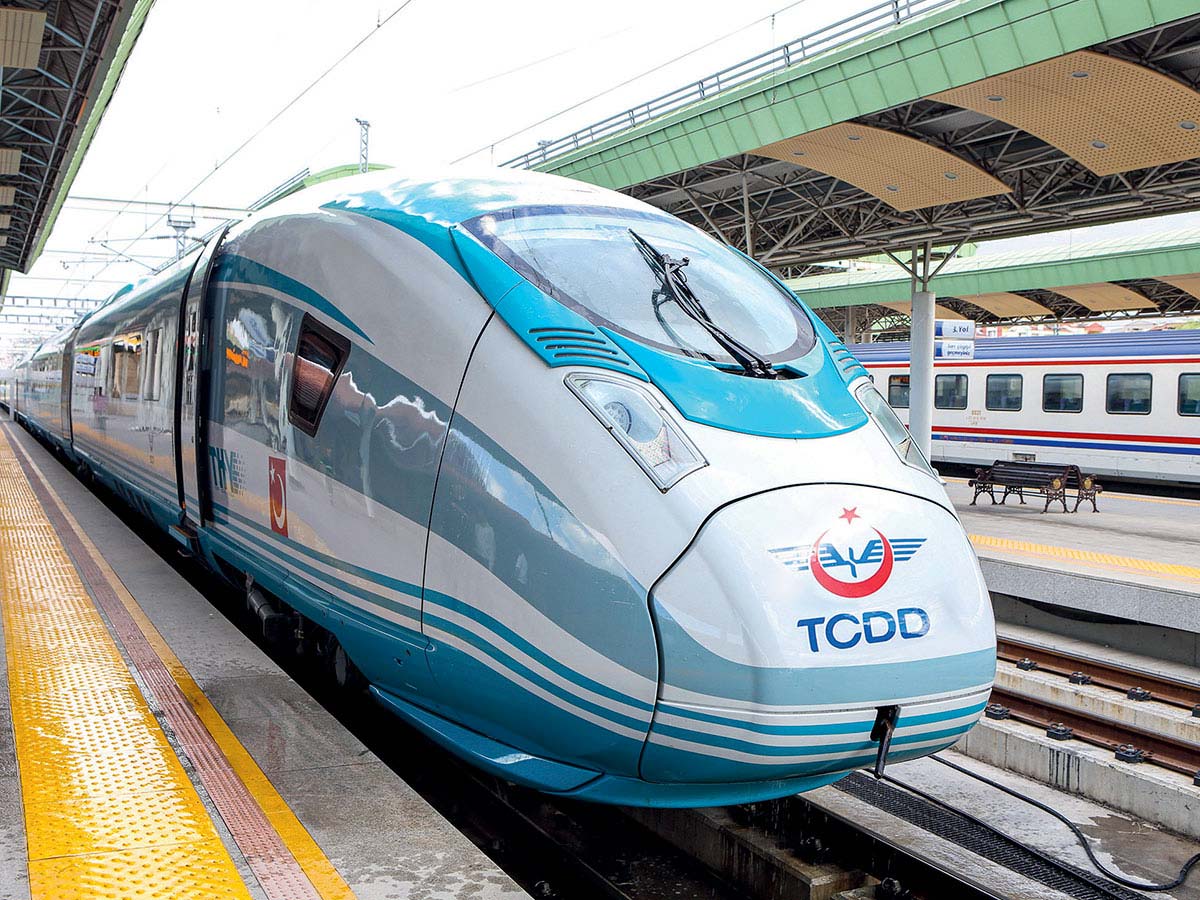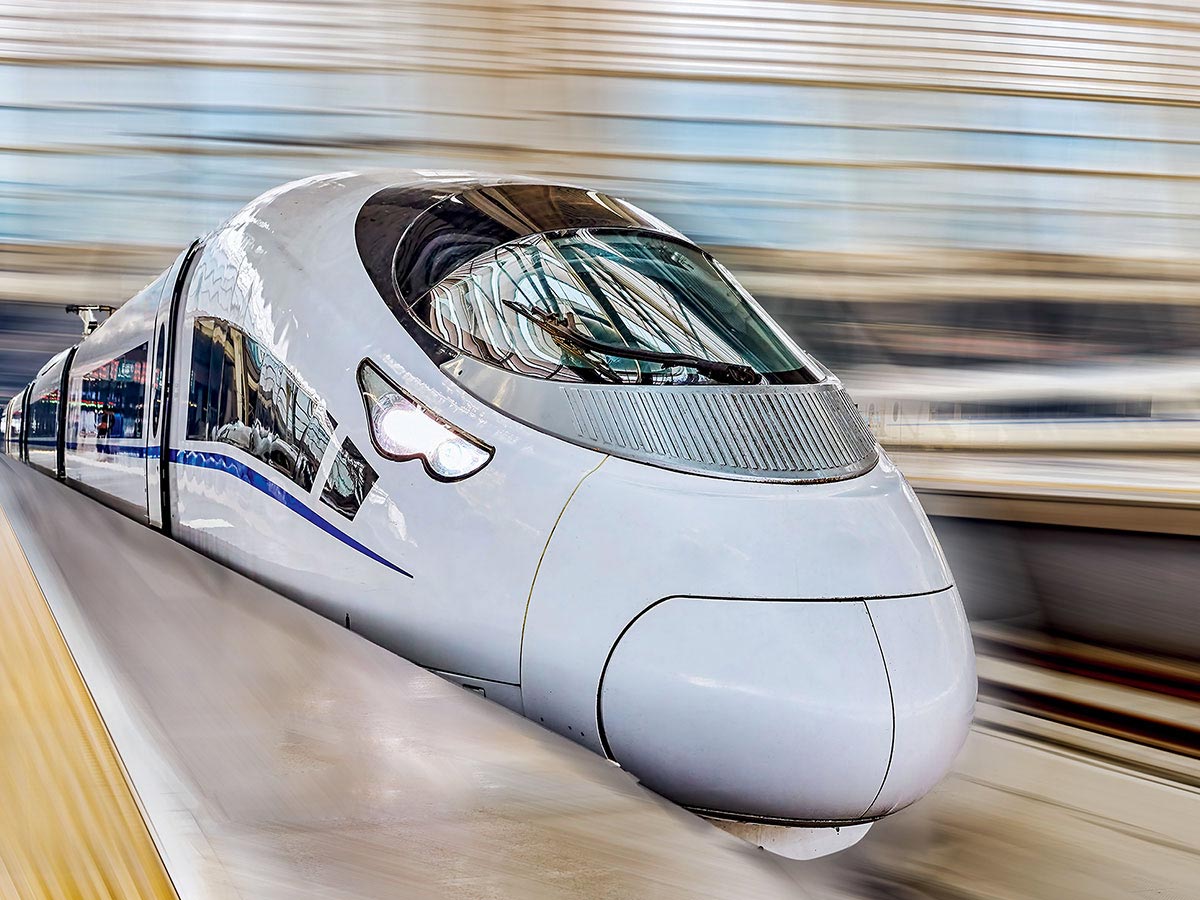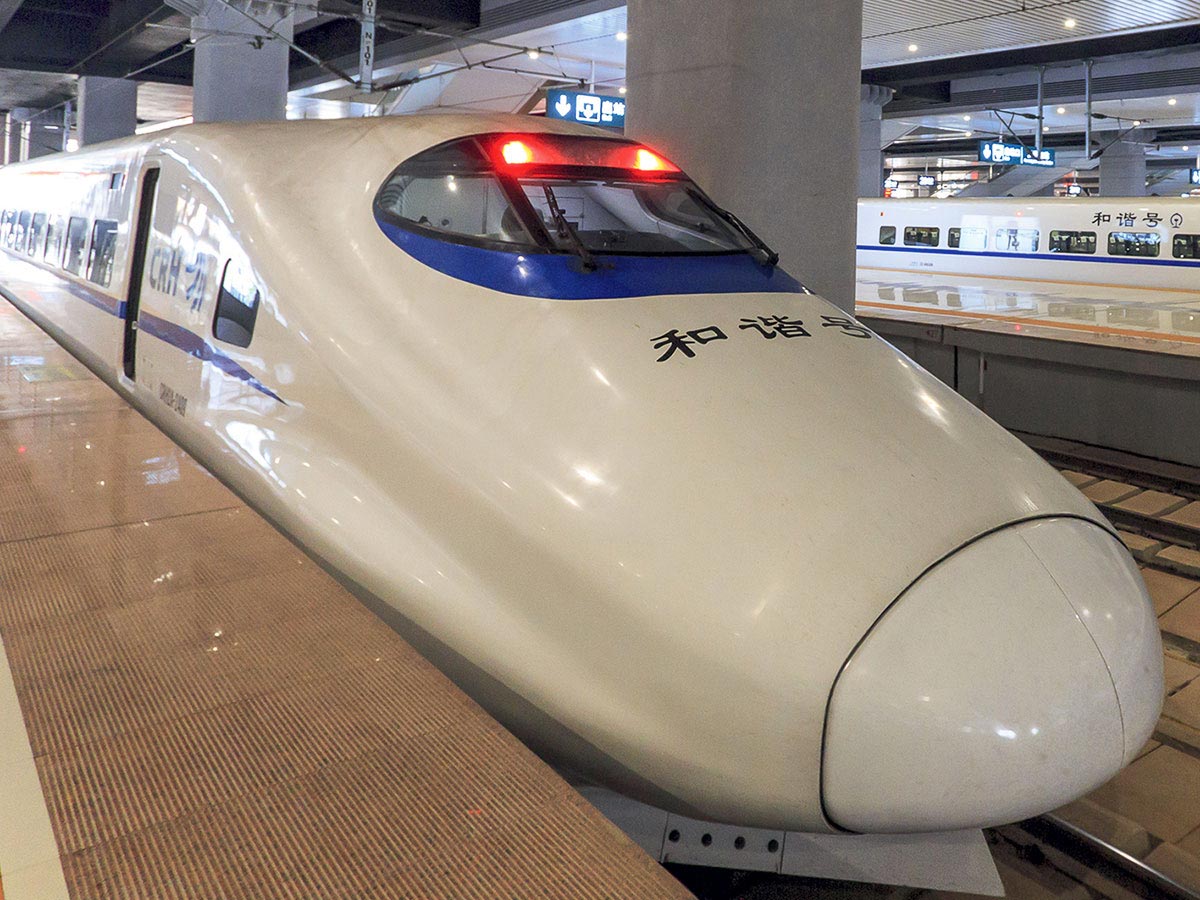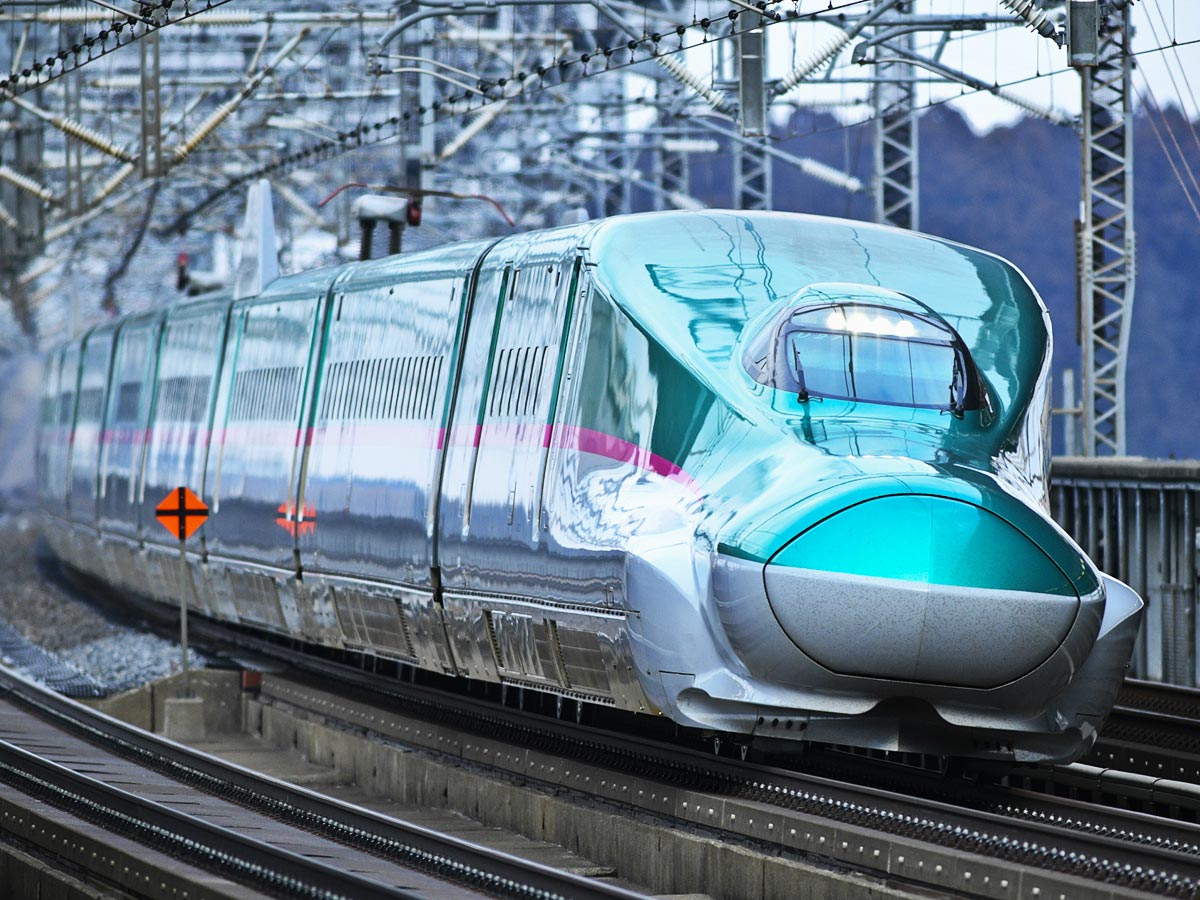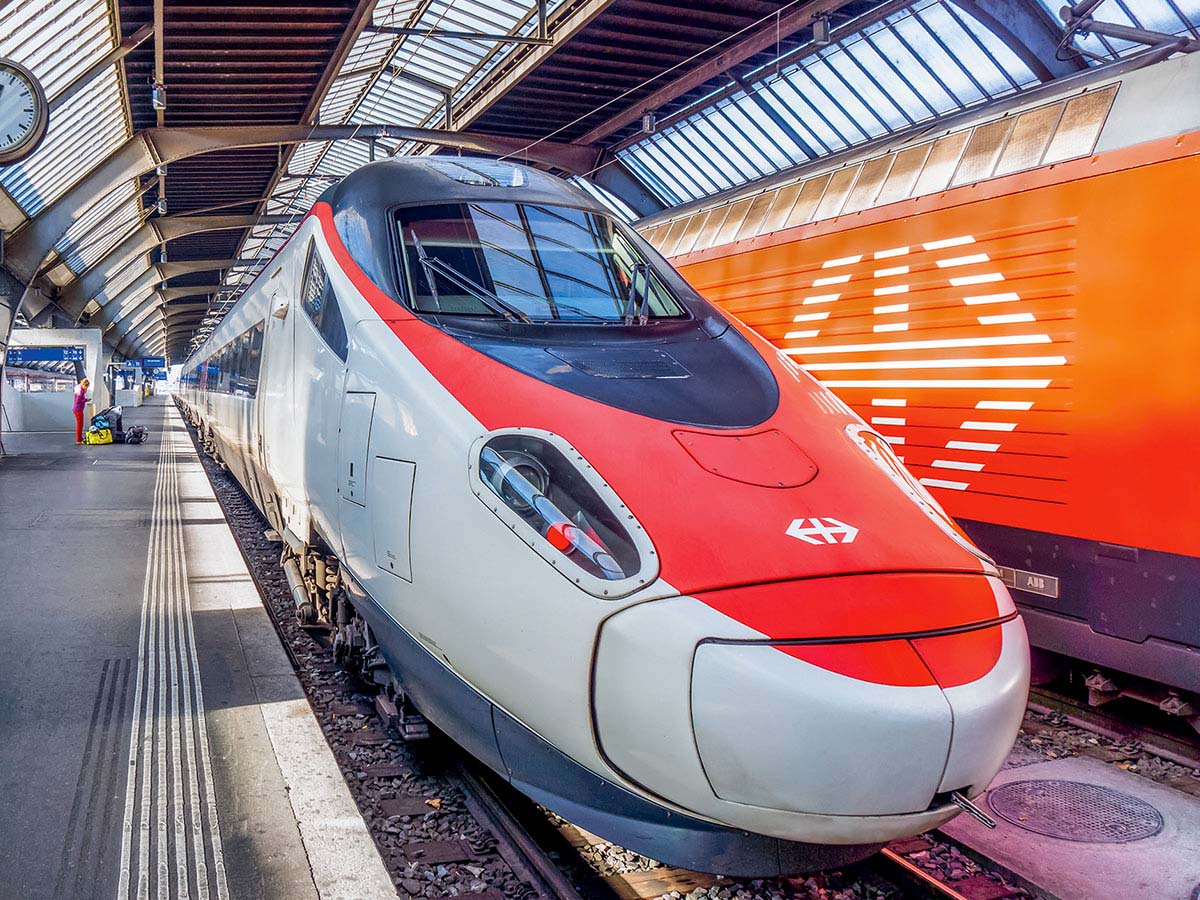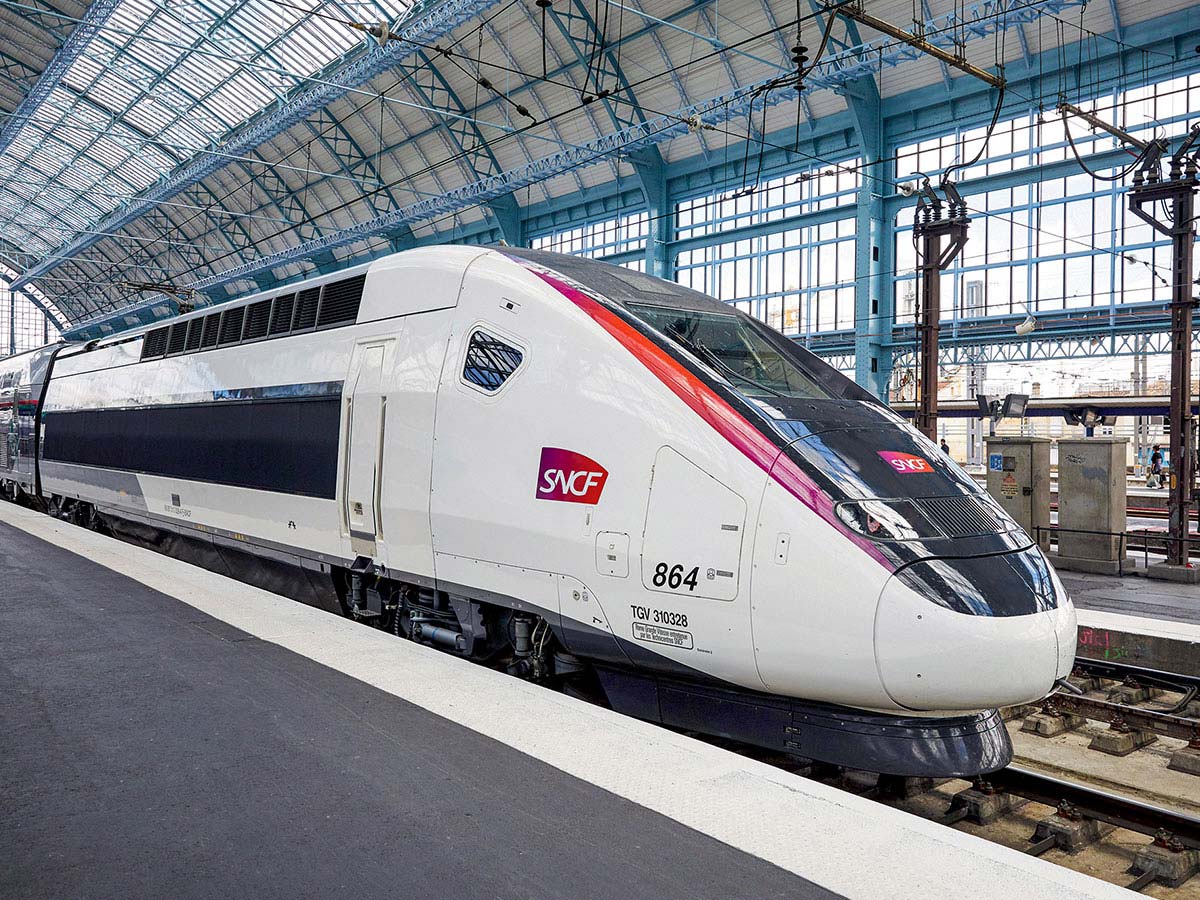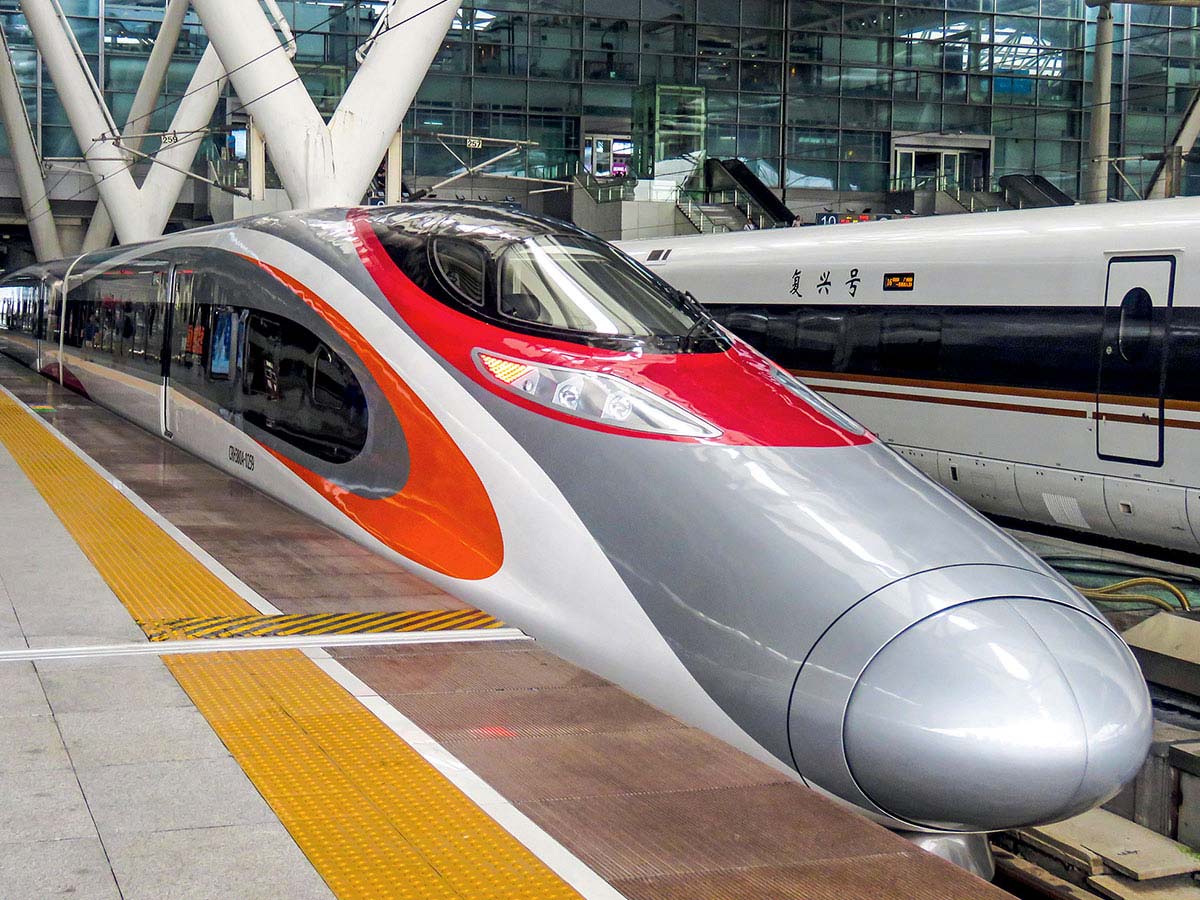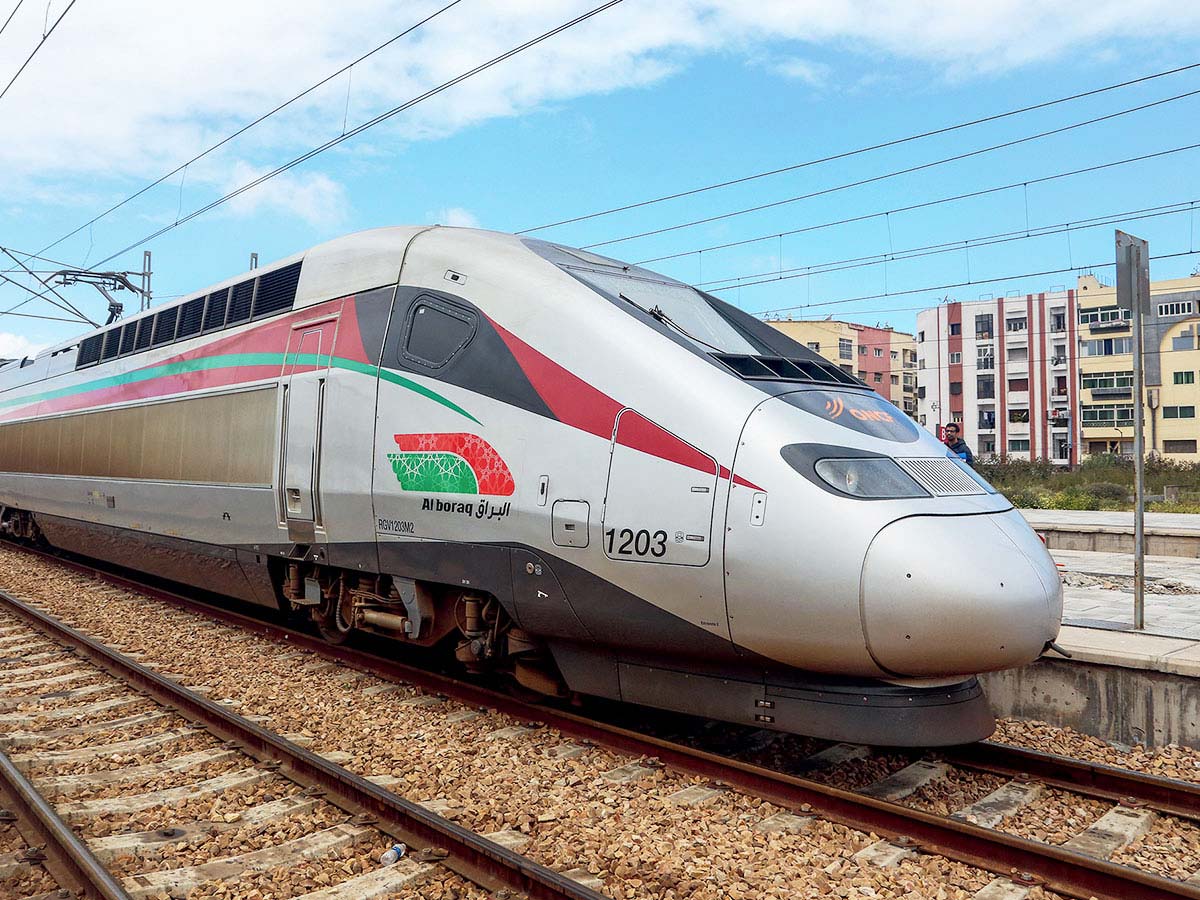BEIJING > SHANGHAI

2011 | CHINA
Journey
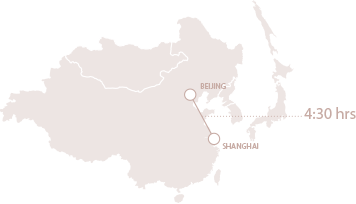
More Info
- Length in km: 1,318 km
- Name of the train: FUXING HAO
Modern China, heir to a five-thousand-year-old civilisation, never ceases to amaze. Despite the immense geographic scale of the country and a population of 1.4 billion, China is unified by traditions as well as the official Mandarin language and writing system. China is the world’s second-largest economy, and with the advent of high-speed, the country has dramatically reduced distances between regions. As the result of investment policy, the country is now home to the longest high-speed network in the world, light years ahead of Japan or Europe. By 2020, the network will expand to 30,000 kilometres. This scale of achievement is accompanied by a very high level of autonomy and remarkable technological skill. The country’s high-speed line – which began operations between Beijing and Shanghai in 2011 - features the world’s fastest trains, all of which are 100% Chinese-designed and manufactured.
Leaving Beijing
Beijing, administrative and political megalopolis of modern China, is steeped in ancient and immutable traditions. With a population of 21 million people, the city also reveals a multitude of paradoxes. Over the course of millennia, the city that was once contained to a historic centre has now spread in all directions. Glass skyscrapers designed by leading contemporary architects rise up amid classical buildings, parks and vestiges of the country’s glorious imperial past such as the Forbidden City, Tiananmen Square, and countless temples and palaces. The charm of the city is condensed into the historic downtown district, build in the hutong style of narrow streets and alleys leading to hidden courtyards and low houses.
Contemporary art galleries stand next to traditional opera houses, fast food outlets, street markets, designer boutiques and bazaar shops. The omnipresent symbol of the Great Wall snakes its way atop the steep mountain ridges surrounding the city. All high-speed trains headed for Shanghai leave from the Beijing South station. Inaugurated in 2008, the ultramodern edifice resembles a spaceship, and is the largest of Beijing’s three rail stations. Glass walls offer lovely views over the exterior gardens. Nearby, in stark contrast to the human tide of passengers flowing in and out of the station, is Tian Tan Gong Yuan, or Temple of Heaven Park, an oasis of peace and tranquillity. Behind double walls, this venerated temple once welcomed imperial ceremonies. Until 1911, the emperor would come, twice each year, to pay homage to the sky.
A dazzling development
Until the first decade of the 21st century, train travel between Beijing and Shanghai was a ten-hour journey at least. On the most part, passengers spent the night aboard the train and then changed trains the next morning before reaching their final destination. Today, the express journey on the high-speed line takes no more than four hours! China launched its high-speed line in 2004, thanks to major government financing and the adoption of a five-year-plan incorporating eight different axes: four north-south lines and four west-east lines. The very first high-speed line was 118 kilometres long, connecting Beijing to Tianjin, and was implemented in 2008 to coincide with the opening of the summer Olympic Games. The entire Beijing-Shanghai line was inaugurated in 2011. And ten years on, in 2021, the high-speed network will grow to cover nearly 36,000 kilometres of rail lines.
Originally the trains were imported or built locally in the context of partnerships with foreign rolling stock manufacturers - Alstom, Bombardier, Siemens, Kawasaki –, in exchange for agreements to transfer technology, to share information and to train engineers onsite. Today, thanks to the great skill of national engineers, the Chinese have acquired high-speed rail technology by building their own Fuxing train sets, manufactured entirely in China with 97% of Chinese patents.
Beijing-Shanghai, the journey
Leaving Beijing-South station behind, the train runs 100 kilometres on a viaduct line that passes above avenues, motorway junctions, rivers and fields. First stop is Tianjin. This great port city owes its prosperity to the Hai He River that flows through town to join the Bohai Sea. For the best view of the city, visitors head for the Tianjin Eye, the giant Ferris wheel that rises up from the Hai He. The train then continues its path through the rich croplands of Shandong province, fed by the waters of the Huang He, also known as the Yellow River and the longest in China (5,460 kilometres). Next stop is Jinan, famed for the hundred freshwater springs that surface in the city’s many parks. From the train’s windows, distant mountains appear within reach.
The contrast between the comfort of a high-speed train and the unchanging landscapes, remote countryside, and tentacular cities of China is flagrant. To the south of Jinan lies the most revered mountain in the Taoist tradition, the Tai Shan, where pilgrims climb a seemingly endless stairway. Another stop is Qufu, birthplace of philosopher and humanist Confucius, one of the most influential figures in world history. After crossing vast stretches of cotton fields, the train enters the fertile province of Jiangsu, whose good fortune derives from the Grand Canal and the Yangtze River, source of irrigation for the province’s rice fields and water supply to the city of Nanjing. This ancient Ming Dynasty capital, surrounded by majestic ramparts, is a destination of choice. The Buddhist monasteries, imperial tombs and museums of the city bear witness to an extraordinary destiny. Nanjing is also a university town, and home to one of the highest towers in China, the 450-metre tall Zifengtower. Toward Danyang, the train navigates across the longest bridge in the world (164 kilometres) before stopping at the charming city of Suzhou. Rising from the banks of the Grand Canal, Suzhou established itself as a centre for the silk trade. The old downtown, built around a dense network of canals, is an enclave of pagodas, silk workshops and small houses sheltered from the city’s ultramodern districts. Suzhou is perhaps best known for the beauty of its gardens, graced with lily-covered ponds, rock outcroppings, pavilions and small bridges. Before pulling into Shanghai, the train passes through Zhonzhuang, offering vistas of a maze of canals and traditional tiled-roof homes.
Kilometres of bridges and viaducts
Most new high-speed lines are built in parallel to existing tracks. On certain axes, the high-speed network was created using bypasses to connect cities that had no rail stations. Each province operates its own trains and manages its own maintenance centres.
The Beijing-Shanghai line presents 244 viaducts, some of which are the longest in the world. 80% of the route is composed of elevated tracks. One of the most impressive in scale is the Tianjin (113 kilometres), connecting the cities of Langfang and Qingxian. The bridge between Danyang and Yunshan (164 kilometres) is the longest in the world, including a 9-kilometre span over the Yangcheng Lake, known as the original source of Chinese crab.
The viaduct piers are prefabricated in local manufacturing plants and transported to the site. Engineers make use of a giant machine, nearly 100 metres long, capable of assembling the viaduct apron by sliding it onto each pier. This process was an economical one, using neither scaffolding nor casing. The impressive number of viaducts allows for the avoidance of flooding, property division, and parcelling of croplands. Rail stations are perfectly integrated into their environment.
Ballastless track
The track is ballastless. More expensive than ballast, this technology facilitates the construction process and requires less maintenance. The use of slabs also allows railways to build longer bridges without the problems incurred by transition from hard slab to elastic ballast.
100 % Chinese trains
All high-speed trains are operated under the China Railway High-Speed (CRH) brand. China commissioned foreign manufacturers at the onset, and in 2007, when the first trains were put into operation on high-speed lines, they were imported. Known as Hexie Hao, or “harmony”, the technologies of each type of train varied according to different construction partnerships. The CRH1 were produced by Bombardier, the CRH2 were derived from the Japanese Shinkansen, the CRH3 were similar to Siemens’ Velaro and the CRH5 to Alstom’s Pendolino, which tilted to better negotiate curves. But the immense territory and diversity of the country’s climate forced contractors to design trains to local specifications.
In 2017 came a new generation of high-speed trains, the
Fuxing Hao (“Renaissance”), easily recognisable. Rapid,
safe, and comfortable, they were entirely designed and
manufactured in China, and are capable of running at
350 km/h. They have been put into operation along the
Beijing-Shanghai line. These robust and economic train sets
allow for cost savings in terms of maintenance and
operations, and are equipped with a surveillance system
that brakes automatically in case of emergency. CRH drivers
are located behind transparent panel separating the driver’s
cab from the passenger cabins.
High-speed trains have proved to be very punctual. At the onset of operations, ticket prices were consistent throughout the year; there were no variable rates or discounts on offer. Today, fares may vary in function of high and low seasons.
→ A CRH at Beijing-South Station, 2012.
Arriving at Shanghai
With one hundred fifty ticket windows, thirty platforms, and surface area of 224,220 m2, the Hongqiao Railway Station in Shanghai – completed in 2010 in the western part of the city - is one of the largest in Asia, built in 2010 in the western part of the city. This intermodal exchange hub takes passengers to the airport by metro line in a single minute, or on foot via a direct long corridor in fifteen. The station has four different levels to accommodate the never-ending stream of passengers, assuring smooth traffic flow for arrivals and departures. Passengers gather in the vast concourse, waiting for a signal to access train platforms by escalators. The roof is made of wide spans of glass that provide natural light.
The contrast between Shanghai and Beijing is clear. Shanghai’s futuristic appearance and busy atmosphere, bustling with activity day and night, make for a very dynamic megalopolis. The most populated city in China, with its 24 million inhabitants, has much to offer, notably in the area of architecture. Shanghai has seen the influence of many cultures throughout its long history, and boasts a joyful hodgepodge of art deco palaces, neo-Renaissance and neo-Gothic villas, wooden Chinese houses and outrageously tall skyscrapers. The two best-known districts border the Huangpu Jiang (jiang means “river”). On the west side is the Bund, the heart of tourist attractions. The sumptuous street fronts include luxury hotels, first class restaurants and chic nightspots, reminiscent of the era of foreign concessions. The east side is home to the financial district of Pudong, a newer area built over the last twenty years. Here, after the sun sets, skyscrapers are dramatically illuminated against the night sky. Near the Hongqiao station is the Shanghai Zoo, where visitors might admire the marvellous collection of goldfish or Asian elephants, as well as the Jingan quarter, to stock up on fine silks and designer wear.
The challenge of high-speed rail in major cities
The Beijing-Tianjin section passes between endless walls of city buildings. This zone, once rural, has been transformed by the establishment of the line and its new stations, evolving into an urban zone served by high-speed trains. The outskirts of Beijing have spread far outside of the city, and thus the line has become a very popular commuting service. The regional and urban functions facilitate the movements of tens of millions of people living in the suburbs and working downtown. High-speed train passengers can reach work and home destinations in less than an hour, saving precious time in their busy days. The great challenge of high-speed has been to eliminate distances while reducing pollution, a major issue for Chinese megacities.
→ The skyscrapers of Shanghai behind a CRH train.
Trains of the future
China is often associated with rapid progress, and in 2004 the country inaugurated its first magnetic levitation train, the Shanghai Transrapid, to connect Longyang Road metro station to the Pudong International Airport. Thirty kilometres travelled in seven minutes, at a speed of 430 km/hr. The Maglev Express of Changsha was put into service in 2016. The Maglev (short for “magnetic levitation”) is a train that runs on tracks equipped with magnets; some maintain the train in suspension a few centimetres above the ground, others pull it forward. As the train is not in direct contact with the track, steeper grades can be tolerated and fewer major engineering works are required. The entire cost, however, is significant.
Even more impressive is the project in development under the Chinese aerospace company China Aerospace Science and Industry Corporation (CASIC). The project is known as Hyper Flight, and imagines a train that would operate in a low-pressure tunnel, floating on a magnetic cushion. Once realised, this innovation will be capable of accelerating speeds up to 4000 km/hr, connecting east and west China in one hour!
In the short term, the 2020 Winter Olympic Games will bring the inauguration of a self-driving “intelligent train”, connecting Beijing to Zhangjiakou via high-speed.
a selection of HIGH-SPEED LINES by creation date
1964

TOKYO > OSAKA
1992

TURIN > NAPLES
1992

MADRID > SEVILLE
2002

COLOGNE > FRANKFURT
2008

BARCELONA > MADRID
2010

SEOUL > BUSAN
2011

BEIJING > SHANGHAI
2014

ANKARA > ISTANBUL
2014

LANZHOU > URUMQI
2016

SHANGHAI > KUNMING
2016

TOKYO > HAKODATE
2016


ZURICH > MILAN
2018

BEIJING > HONG KONG
2018

TANGIER > CASABLANCA
